History
History
A singular mission for more than 60 years.
Preserving and sharing the world’s handwritten past to inspire a deeper understanding of our present and future.
1960s
A manuscript preservation idea takes shape.
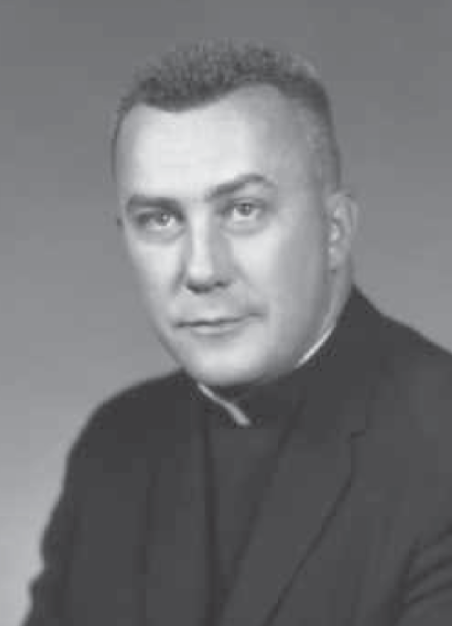
1964
Launches the idea for preserving at-risk manuscripts at Saint John’s University (SJU). Father Colman Barry, OSB (at left), newly-installed SJU president, is inspired by a project in the 1950s to microfilm a selection of the Vatican’s manuscripts. He envisions SJU as a safe repository for microfilms of manuscripts held in Benedictine libraries from across Europe. Fr. Barry secures an initial gift of $40,000 from the Hill Family Foundation under the direction of Aldred (Al) Heckman to get things started and gives the idea a name—Monastic Manuscript Project (MMP).
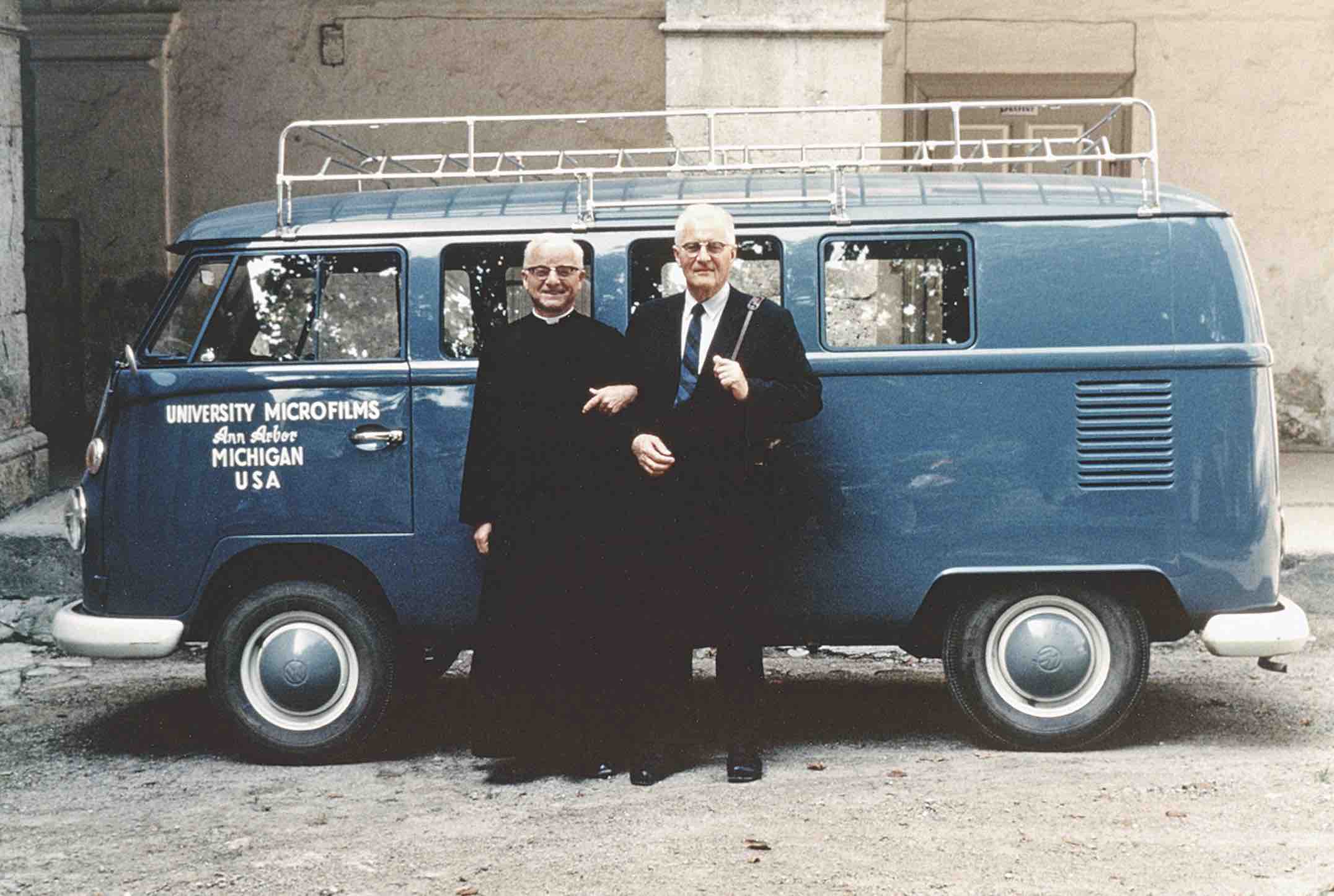
1964
Names Father Oliver Kapsner, OSB, a fellow Benedictine monk of Saint John's Abbey and a trained librarian and linguist, to lead the effort. Fr. Oliver heads to Italy, Switzerland, and Austria to prospect for monasteries open to partnering with Saint John’s University on the project. After several setbacks, he secures Kremsmünster Abbey in northern Austria as the Monastic Manuscript Project’s first preservation effort. At left, Fr. Oliver poses with Eugene Power—the founder of University Microfilms, Inc. and the chief technical advisor to the microfilm project—with the Volkswagen minivan used to travel between monasteries and projects.
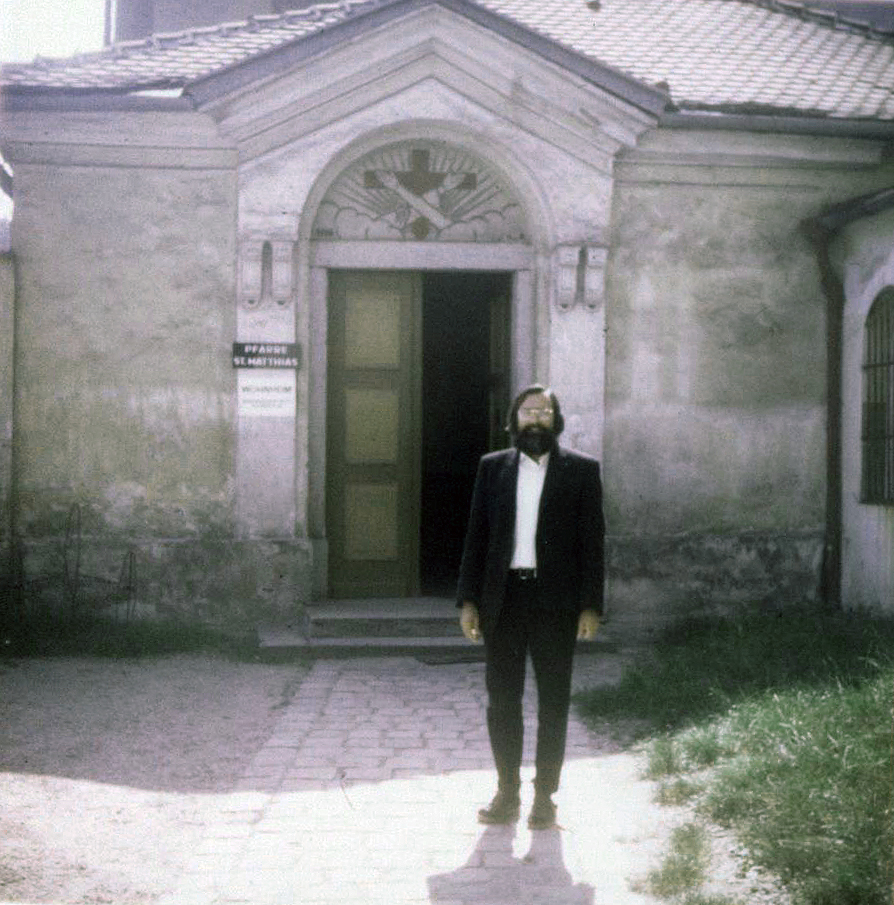
1965
Begins first preservation projects to photograph and catalog manuscripts. Over the next seven years, the team films 28,000 manuscripts in Austria, forming the basis of what becomes known as the Monastic Manuscript Microfilm Library (MMML). In those seven years, microfilming was completed at 42 repositories: 28 monasteries (12 Benedictine, five Cistercian, four Augustinian, two Premonstratensian, three Franciscan, one Dominican, one Mechitarist) and 14 non-monastic libraries (three diocesan, two university, six state or municipal, one castle, and two private). Work is led by Father Oliver Kapsner, OSB, and his field director successor, Father Urban Steiner, OSB, (at left, photographed in Linz, Austria), who serves as field director in Austria (1971–1973) and Spain (1973–1977).
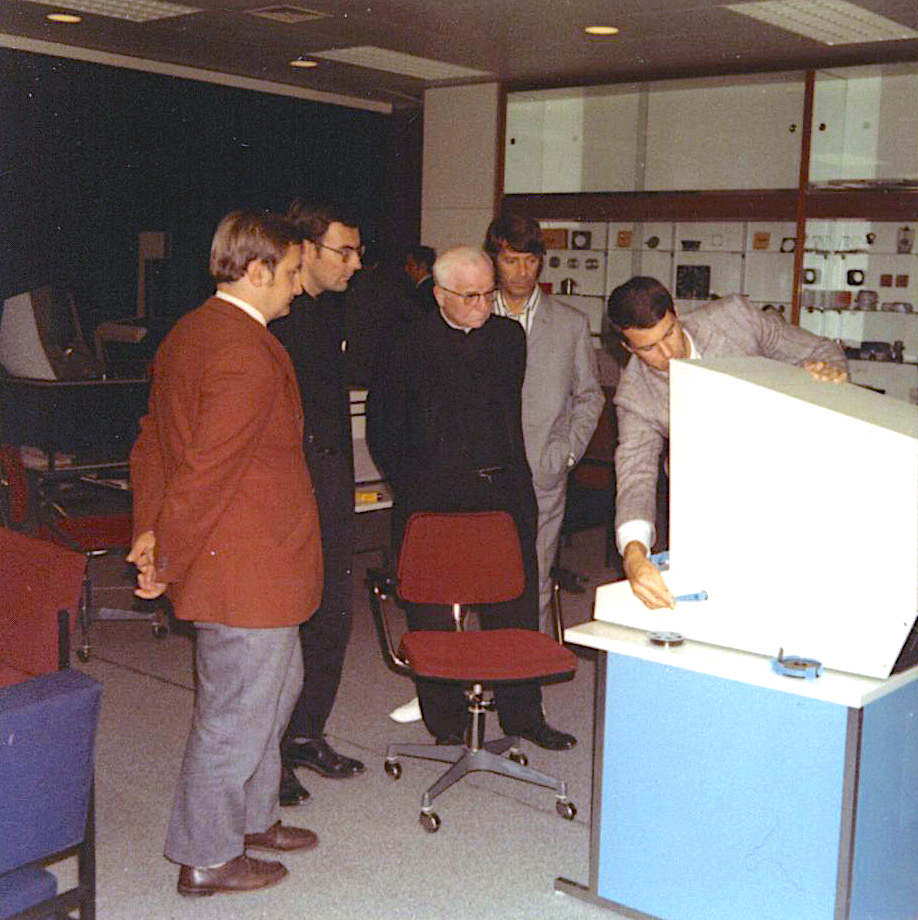
1968
Starts work at the Austrian National Library, where in three years (1968–1971), Father Oliver Kapsner, OSB, and his team microfilm more than 13,000 manuscripts. Fr. Kapsner, (third from left) and Father Urban Steiner, OSB, (second from left) view microfilming equipment in Vienna, Austria (1971).
1970s
From Europe, a move to Malta and Ethiopia.
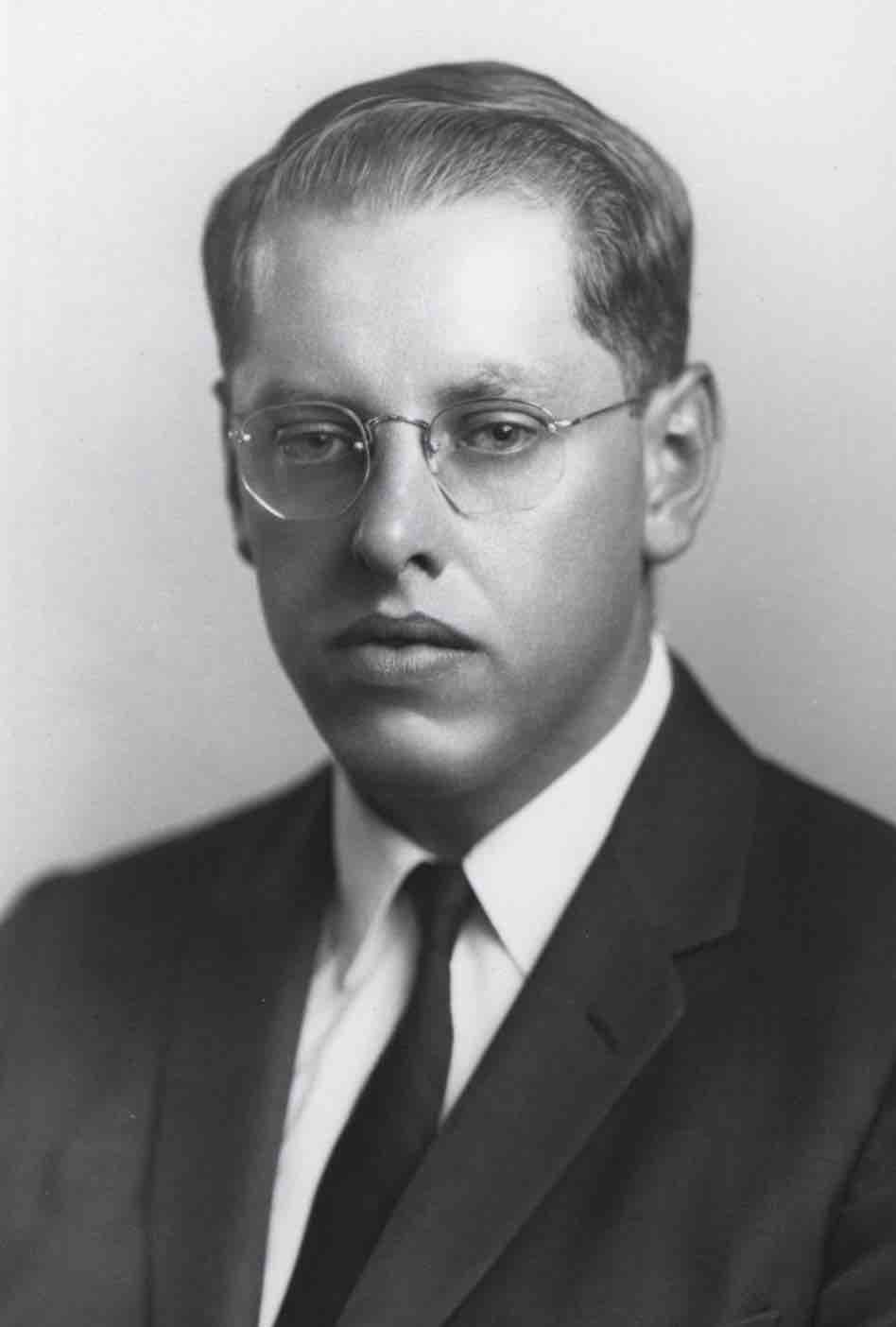
1972
Promotes Dr. Julian Plante (at left) to director, succeeding founding director Father Oliver Kapsner, OSB. Plante serves as MMML director from 1972 to 1992. Plante joined MMML in 1966 as the first curator for the microfilm library.
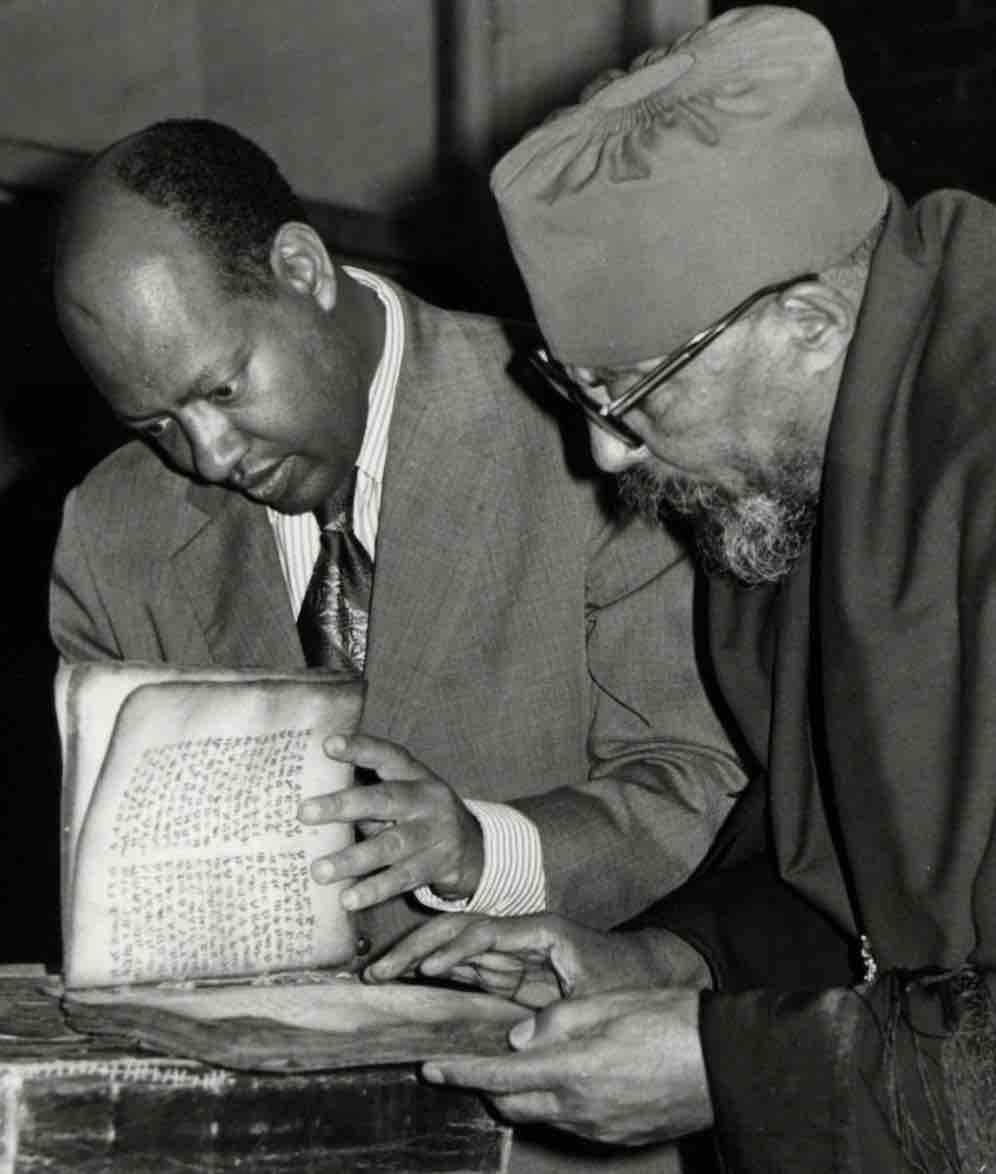
1973
Begins partnership in Ethiopia that lasts for more than four decades. MMML Director Julian Plante secures initial funding from the National Endowment for the Humanities that brings together a partnership between MMML, Vanderbilt University, and the Ethiopian Orthodox Patriarchate. The project is called the Ethiopian Manuscript Microfilm Library (EMML) and receives the blessing of Ethiopian Emperor Haile Selassie. Microfilming begins in September of 1973 just as Ethiopia descends into 12 years of chaos and civil war. Yet miraculously, the project survives. With funding from the Ford Foundation, manuscripts continue to be brought to Addis Ababa for filming. Communication between the project workers and their American sponsors is sporadic, but the EMML camera team continues working until 1994 and photographs more than 9,000 manuscripts. Abuna Theophilos (at right), the Patriarch of the Ethiopian Orthodox Church, studies a manuscript from the EMML, in Addis Ababa, with Dr. Sergew Hable Selassie (at left), field director of the microfilming project (April 1974).
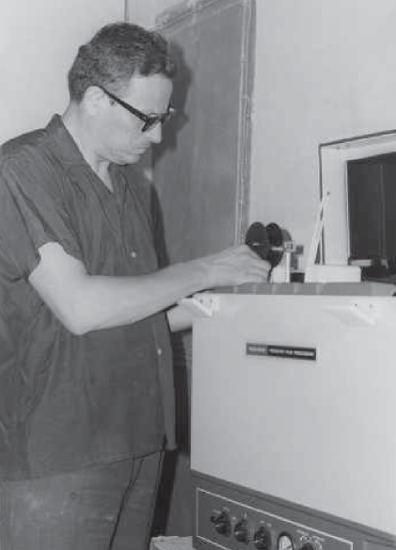
1973
Creates the Malta Study Center with the support of Joseph S. Micallef (KMOb, Honorary Consul General of Malta Saint Paul / Minneapolis) and begins filming the extensive manuscript, music and archival document holdings at the Cathedral Archives of Malta. This small island nation, once ruled by the Knights of the Order of Saint John of Jerusalem, Malta, and Rhodes, played an important role in the history of the Mediterranean since the 12th century. At left, Louis Calleja, OFM Conv, prepares the specialized film developing machine at the Conventual Priory in Rabat, Malta.
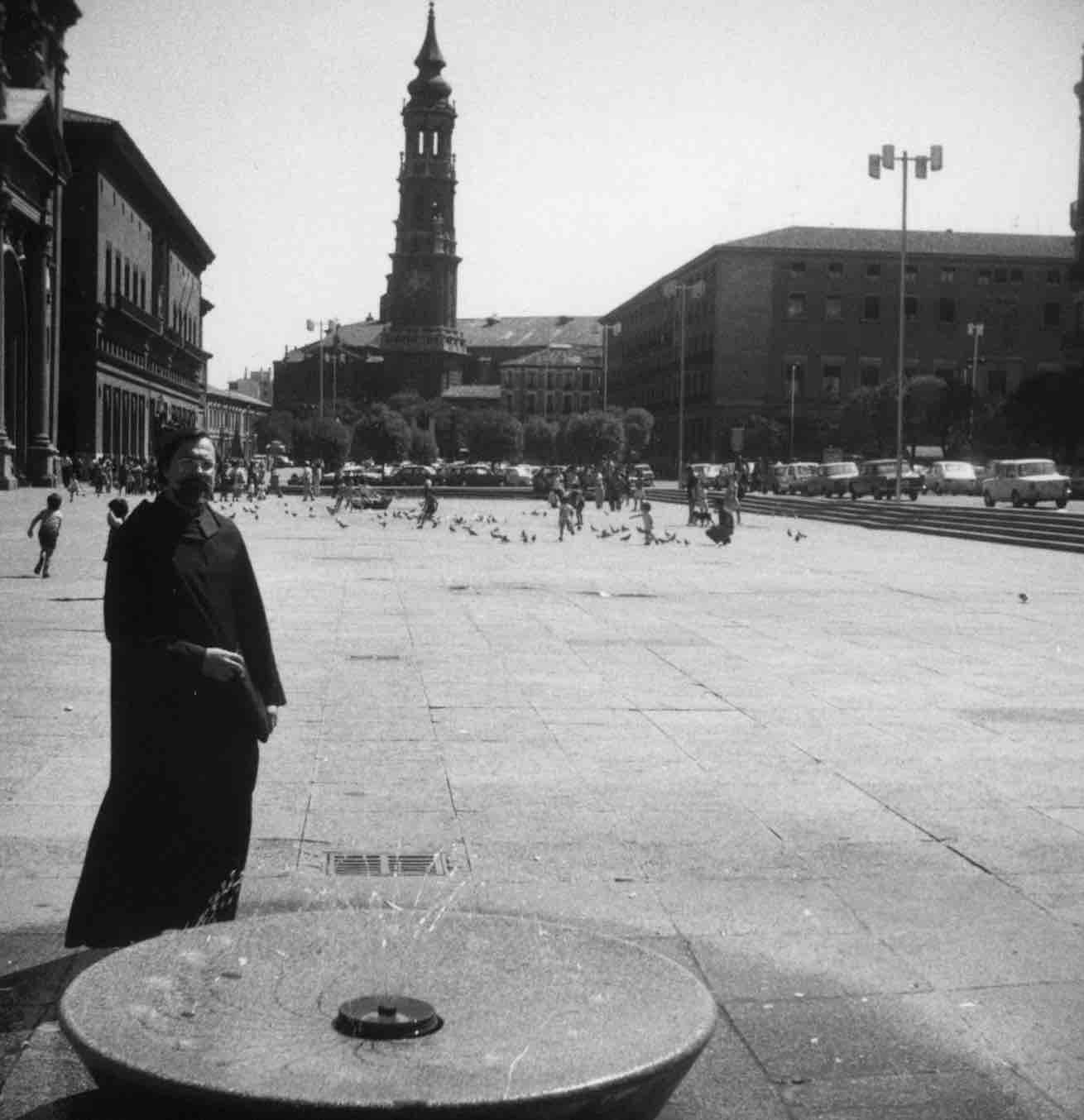
1973
Moves operations from Austria to Spain. Over the course of four years, Father Urban Steiner, OSB, (at left in Zaragoza, Spain, 1974) and his team microfilm about 6,000 manuscripts.
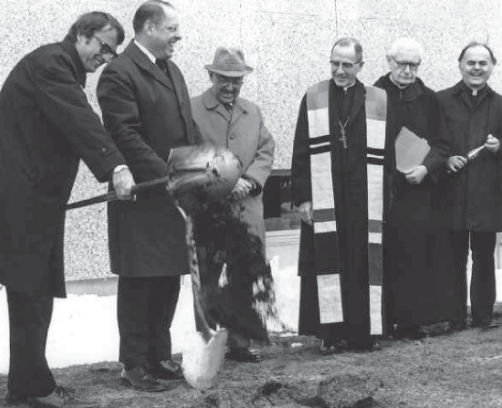
1975
Breaks ground on new microfilm library located adjacent to the Saint John’s University Alcuin Library, which was constructed in 1966. Both buildings were designed by the world-renowned Bauhaus architect Marcel Breuer. Groundbreaking ceremonies include (from left) University President Father Michael Blecker, OSB; MMML Executive Director Julian Plante; Executive Director of the Hill Family Foundation Al Heckman; Abbot John Eidenschink, OSB; Father Roland Behrendt, OSB; and Father Kieran Nolan, OSB.
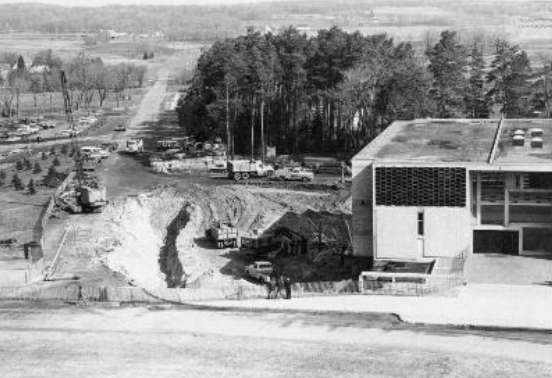
1975
Becomes the Hill Monastic Manuscript Library (HMML) in recognition of vital support from the Hill family. Construction of the new library building continues in late 1975. The new building opens in 1976 and HMML continues expanding its field operations, eventually working in Germany, Spain, Portugal, England, Switzerland, South Africa, and Sweden.
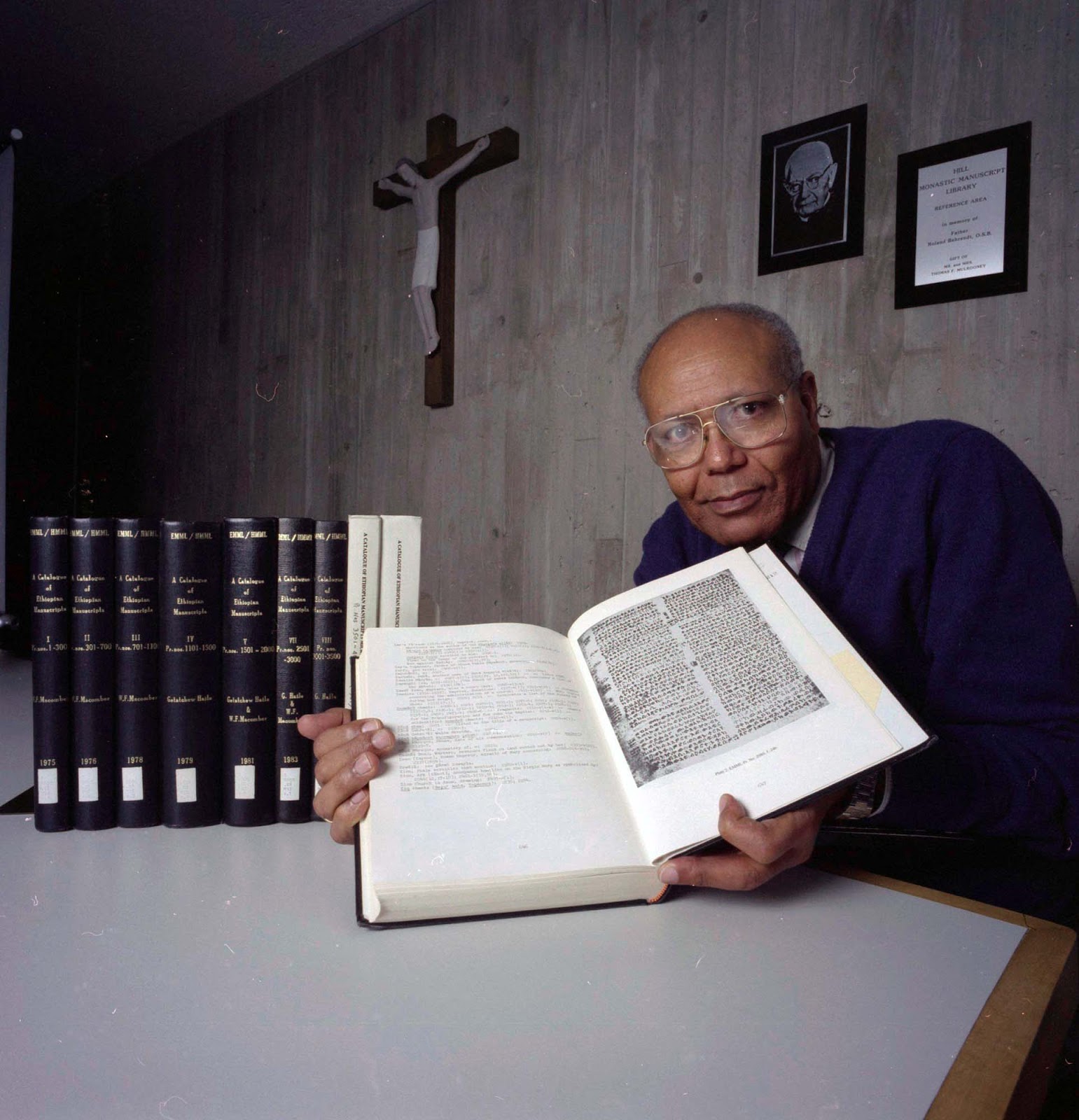
1976
Welcomes Dr. Getatchew Haile (at left) to work on cataloging HMML's growing Ethiopian Manuscript Microfilm Library (EMML) collection with William Macomber. Getatchew, a scholar, former professor in Addis Ababa, and member of the Ethiopian Parliament, survived an armed attack during the 12 years of civil war in Ethiopia. A MacArthur Fellows Program “Genius Grant” awardee, he spends his career at HMML expertly cataloging more than 6,000 manuscripts and documenting the handwritten heritage of the country from which he was exiled.
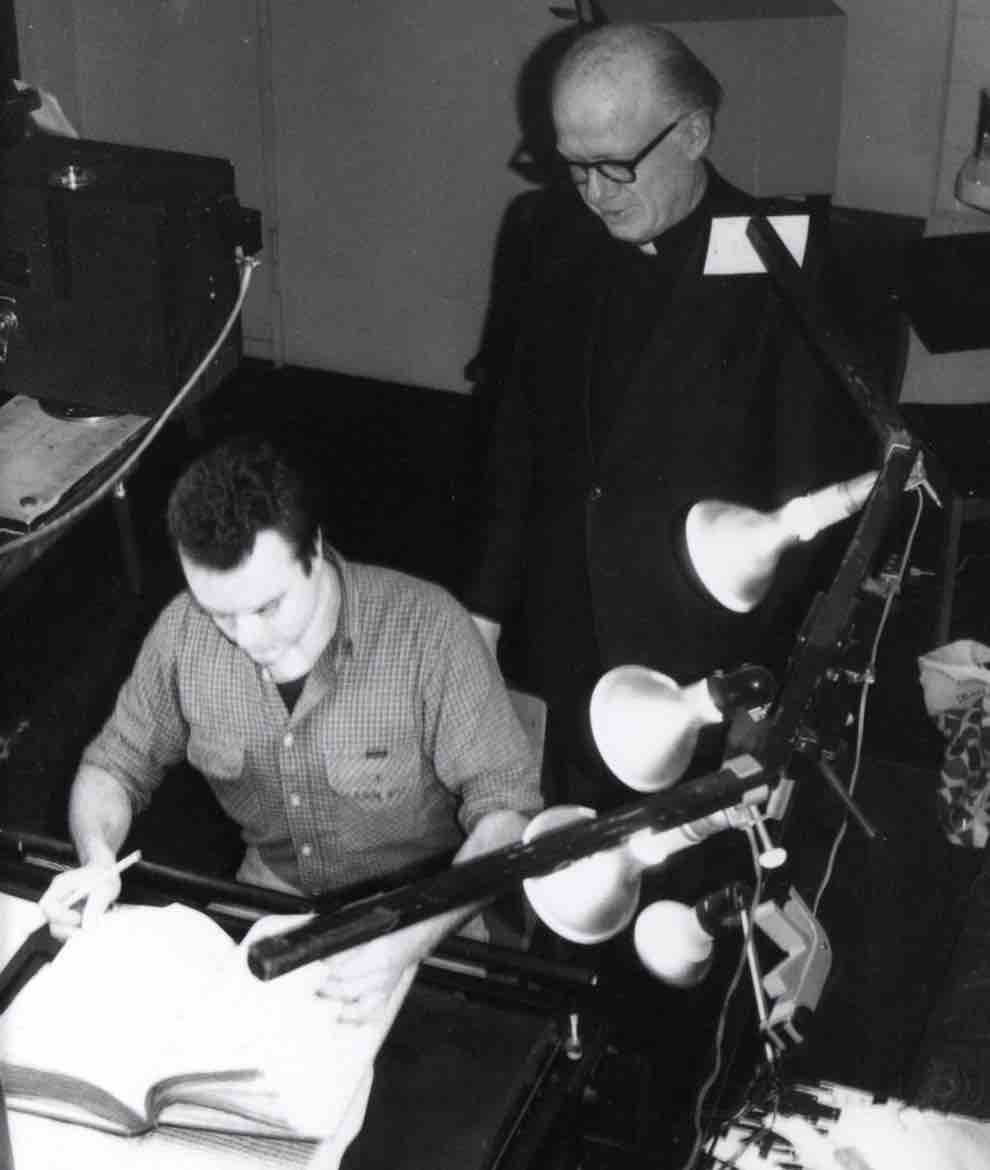
1979
Begins work in Germany and microfilms more than 14,000 manuscripts between 1979 and 2000. At left, Father William Lanahan, first HMML field director in Germany, with camera technician (1980).
1980s
European expansion includes Portugal and England.
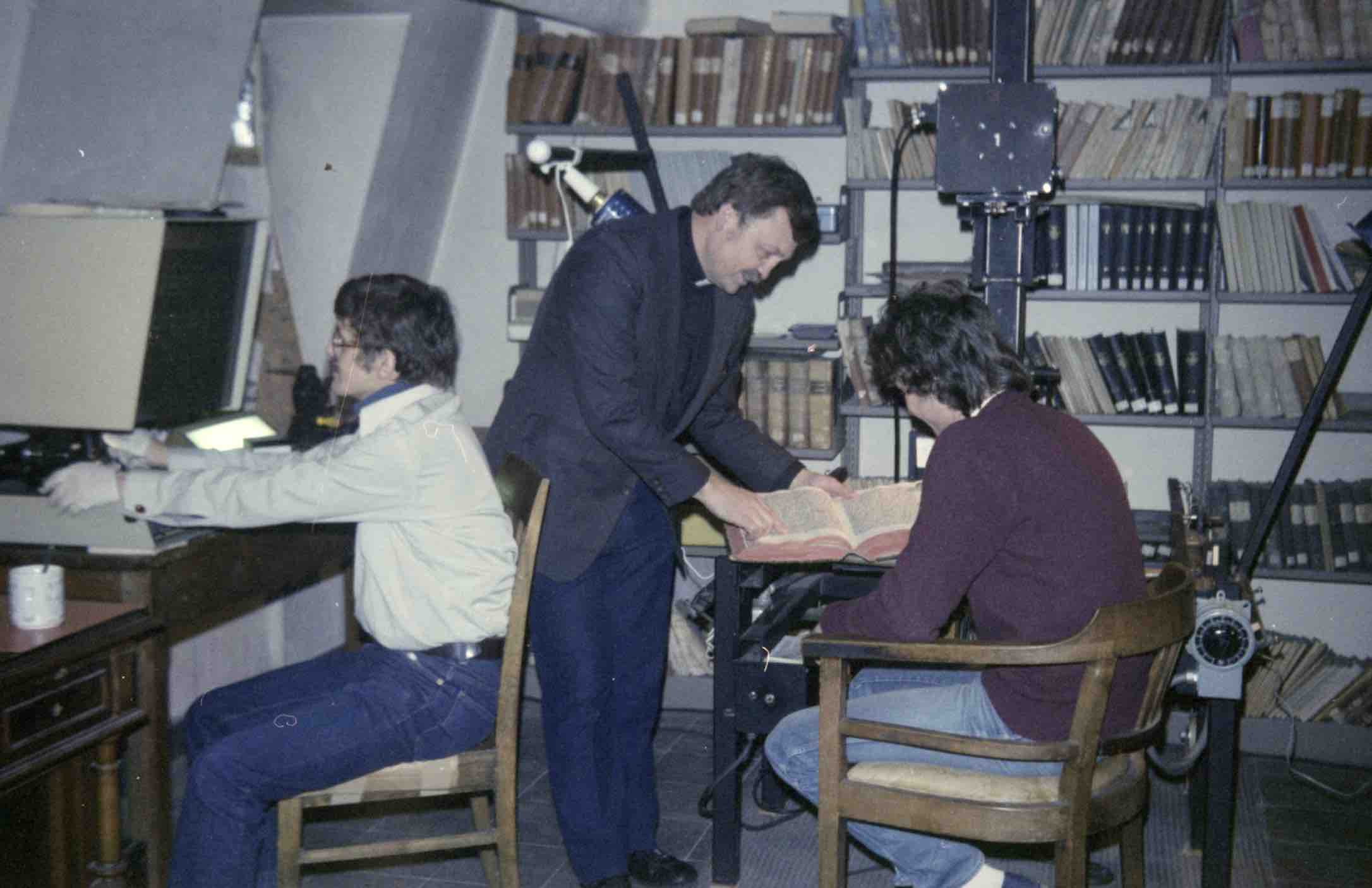
1981
Starts work in Portugal, much of which is directed by Father Jonathan Fischer, OSB, and Brother Richard Oliver, OSB, each of whom serves as field director in both Germany and Portugal in the 1980s. Work continues in Portugal until 1987. At left, Fr. Fischer (standing center) works with technicians in Paderborn, Germany.
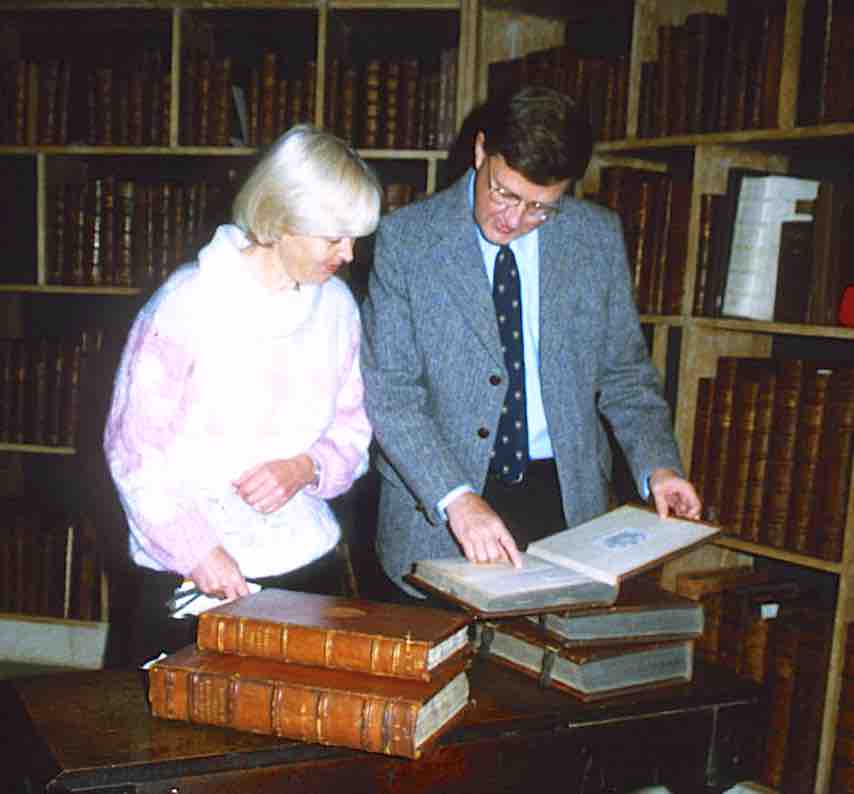
1985
Microfilms about 700 manuscripts in England in 1985 and 1989, chiefly in Durham, as well as at Syon Abbey and St. Hugh’s Charterhouse. At left, Brother Richard Oliver, OSB, reviews manuscripts in Durham, England, during HMML’s work there.
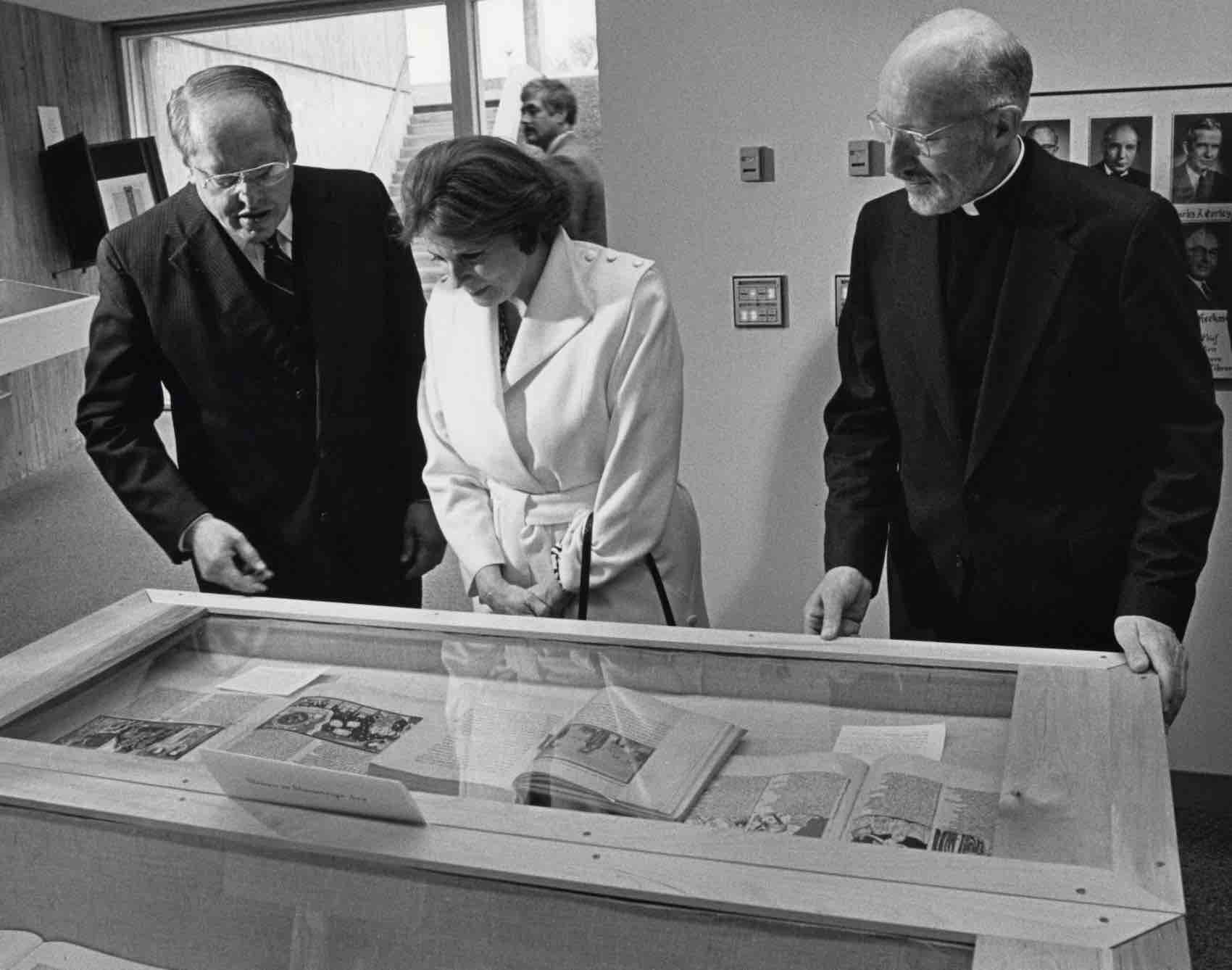
1986
Holds major fundraiser entitled One World Benefit at the Ordway Theatre in Saint Paul, Minnesota, on April 14 and 15 with a performance of an original composition by Libby Larsen, Coming Forth into Day. Philip Brunelle conducts the Plymouth Congregational Church Orchestra and Festival Choir. Madame Jehan Sadat, widow of Egyptian President Anwar Sadat (1918–1981), participates in the program. At left, Mme. Sadat receives a tour of HMML from HMML Executive Director Julian Plante (left) and Saint John’s University President Father Hilary Thimmesh, OSB, (right) as part of the One World Benefit and concert for HMML.
1990s
Leadership transitions. Global online catalog standards established.
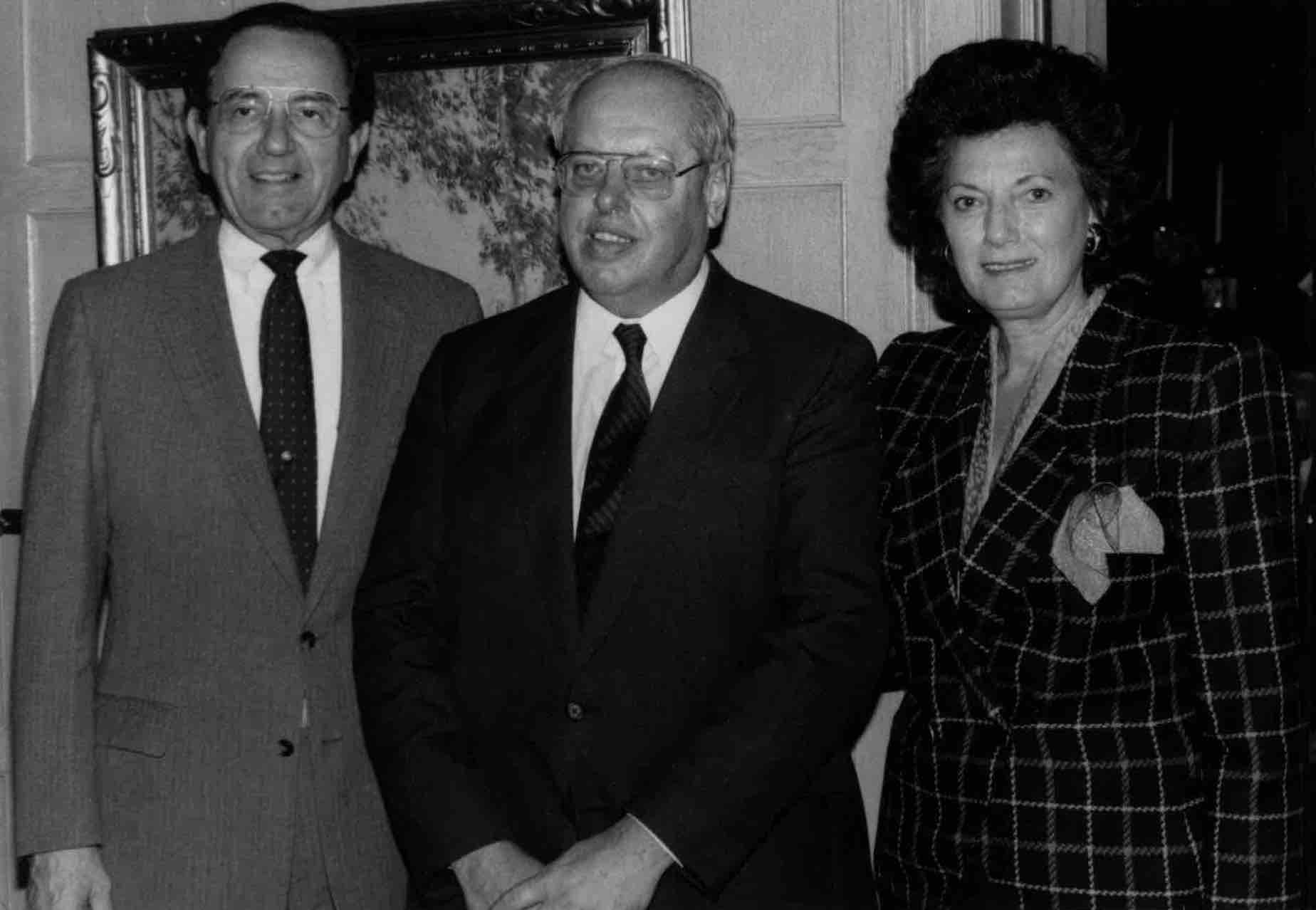
1990
Celebrates HMML’s 25th anniversary with the Governor proclaiming May 6–12 as the Hill Monastic Manuscript Library Week in the State of Minnesota. Attending the special anniversary reception are (from left) Governor Rudy Perpich, HMML Executive Director Julian Plante, and First Lady Lola Perpich.
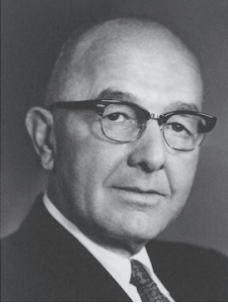
1991
Establishes the Heckman Stipend to provide financial support to scholars who have not yet established themselves professionally and whose research cannot progress satisfactorily without consulting materials to be found in HMML’s collections. The stipends are awarded semi-annually and can cover anything related to a scholar’s travel, housing, meals, and research cost at HMML. The fund is established by the family and friends of Al Heckman (at left), who dedicated his life to philanthropic organizations in Saint Paul and throughout Minnesota. Heckman, involved with HMML since its inception in 1964, served as the first chair of the Board of Overseers and continued his support for more than 25 years.
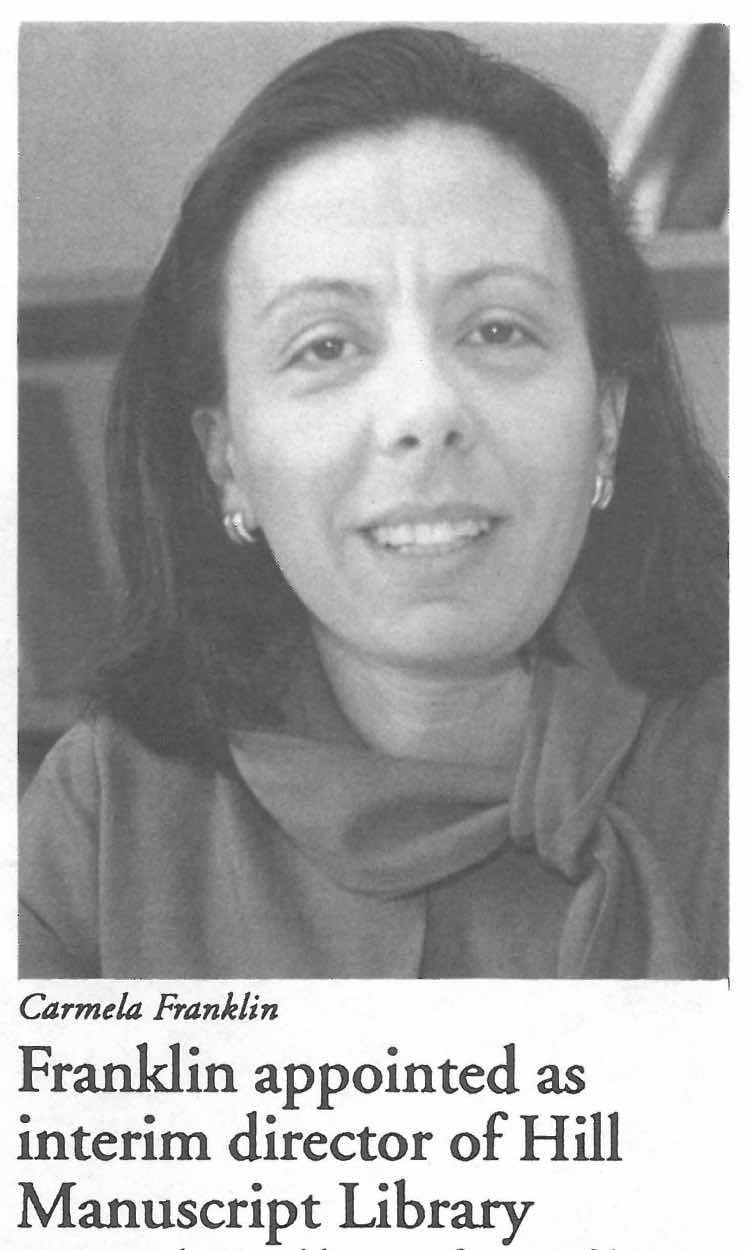
1992
Names historian and scholar Dr. Carmela Franklin (at left) interim director upon the resignation of Julian Plante, who leaves after leading the organization for 20 years. She serves in the position from 1992 to 1993 and is later named Director of the American Academy in Rome.
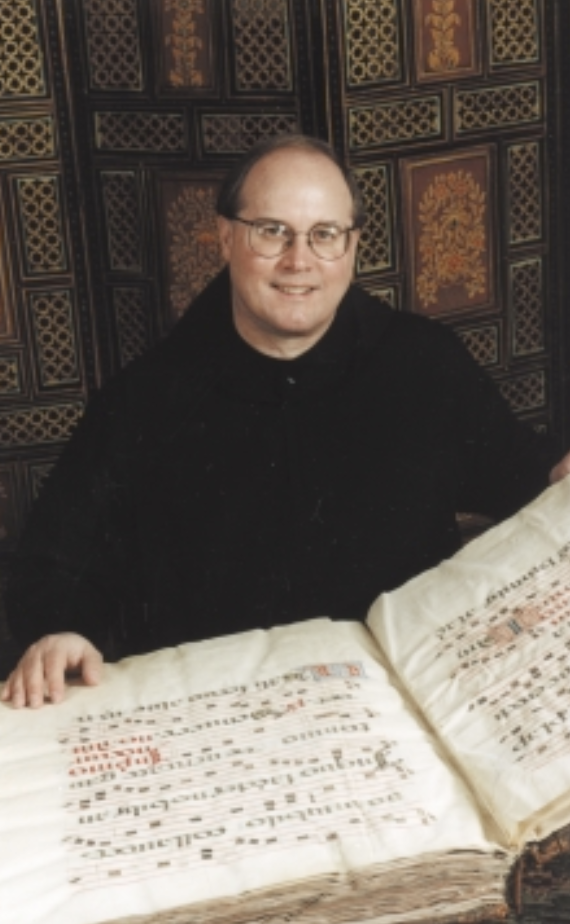
1993
Names Father Eric Hollas, OSB (at left), as its fourth executive director. He leads the organization for 9 years before retiring in 2002.
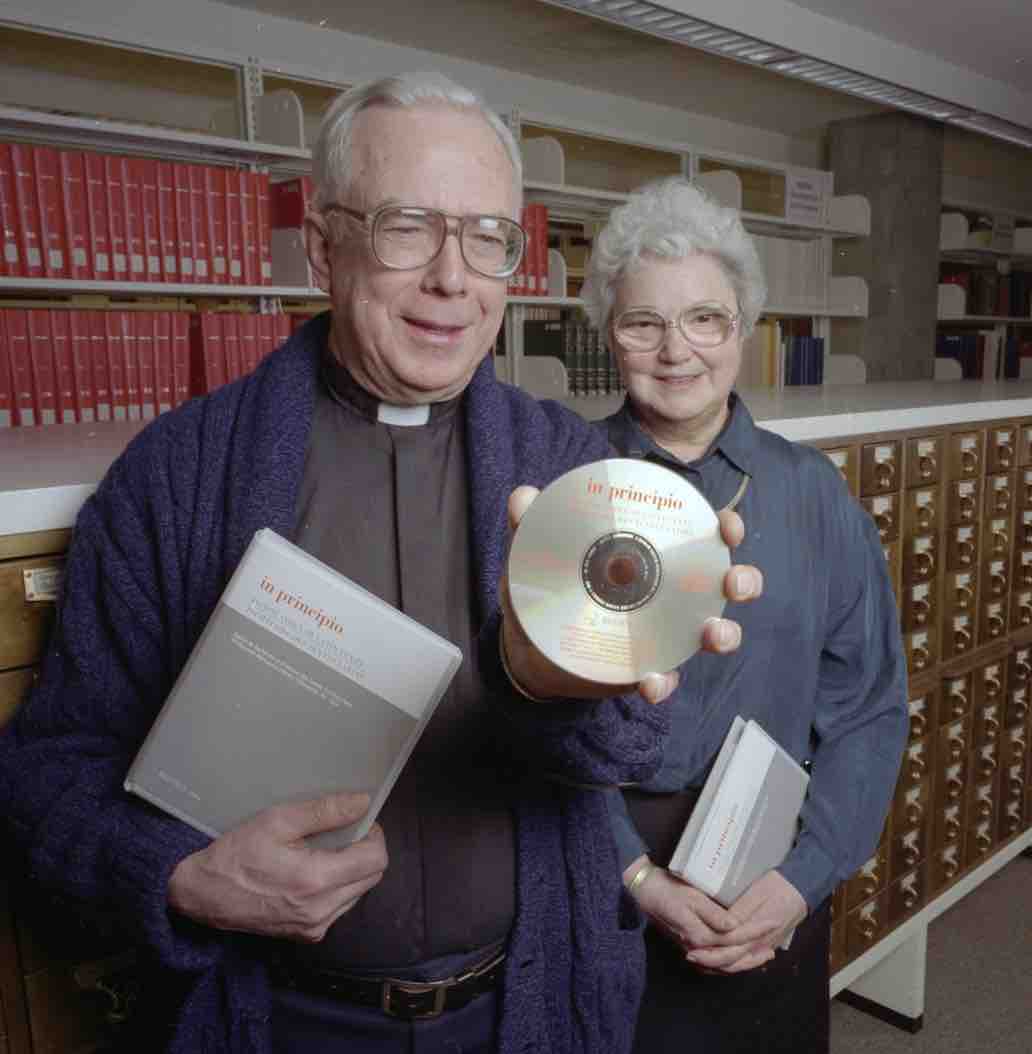
1993
Becomes a major contributor alongside the Institut de Recherche et d'Histoire des Textes (IRHT) to the In Principio database, published by Brepols. HMML contributes approximately 400,000 incipits (opening words used to identify texts) over the course of the next eight years. Initially issued on CD-ROM, the database is still active today and offered through online subscriptions. At left, Father Peregrin Berres, OSB, and Sister Wilma Fitzgerald, SP, show a copy of the In Principio CD-ROM with incipits contributed by HMML staff from the card catalog of incipits behind them (1995).
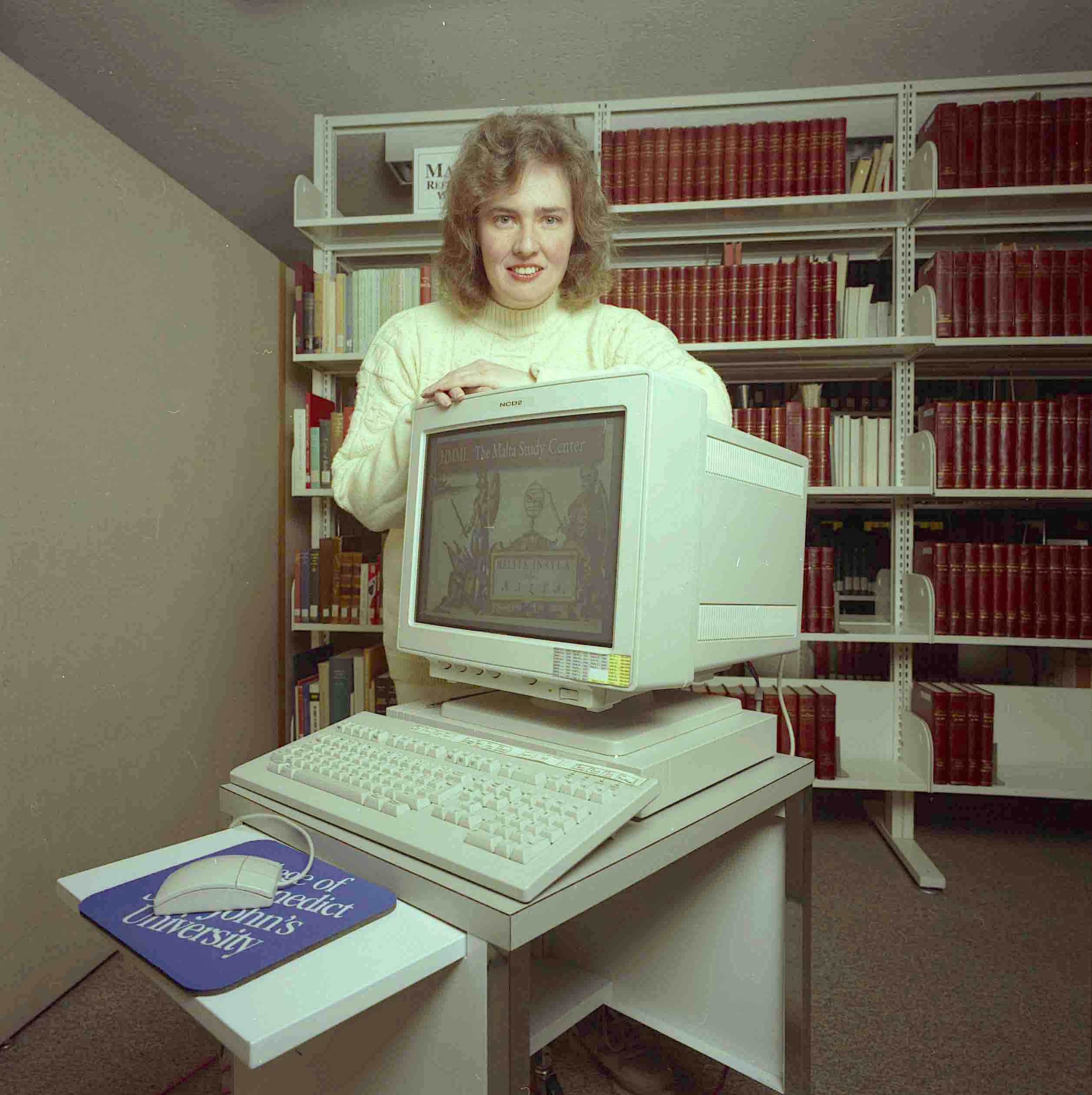
1995
Names Dr. Theresa Vann as the founding curator for the Malta Study Center. She serves in that position until 2013.
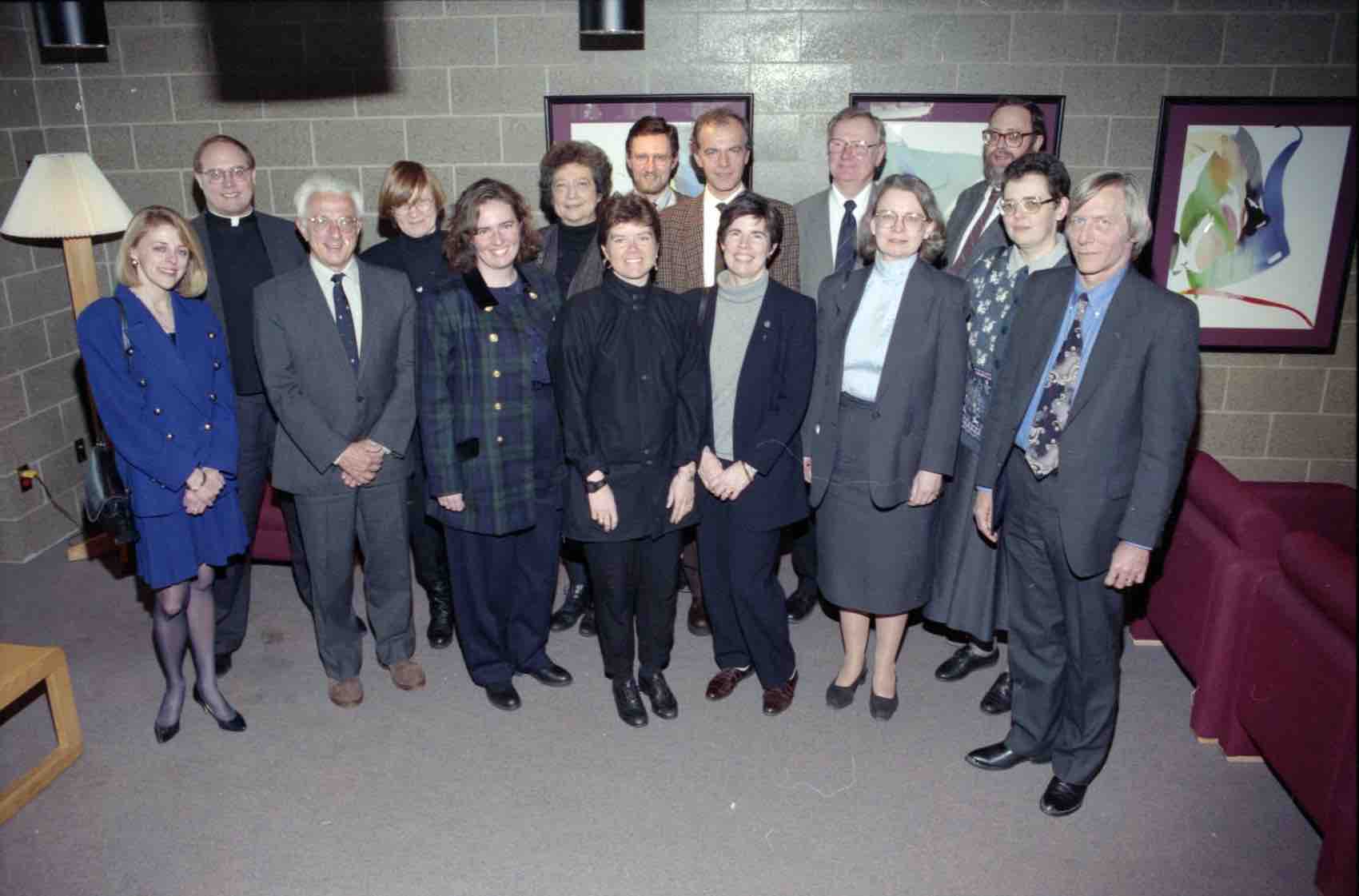
1996
Enters into dialogue with representatives from the Digital Scriptorium, the Institut de Recherche et d'Histoire des Textes (IRHT), and others to develop standards for online descriptions of manuscripts. HMML’s project, titled EAMMS (Electronic Access to Medieval Manuscripts) results in the legacy catalog for microfilmed and digitized manuscripts, which becomes the forerunner to today’s online Reading Room. At left, representatives of different digital cataloging projects for manuscripts meet at Saint John’s University.
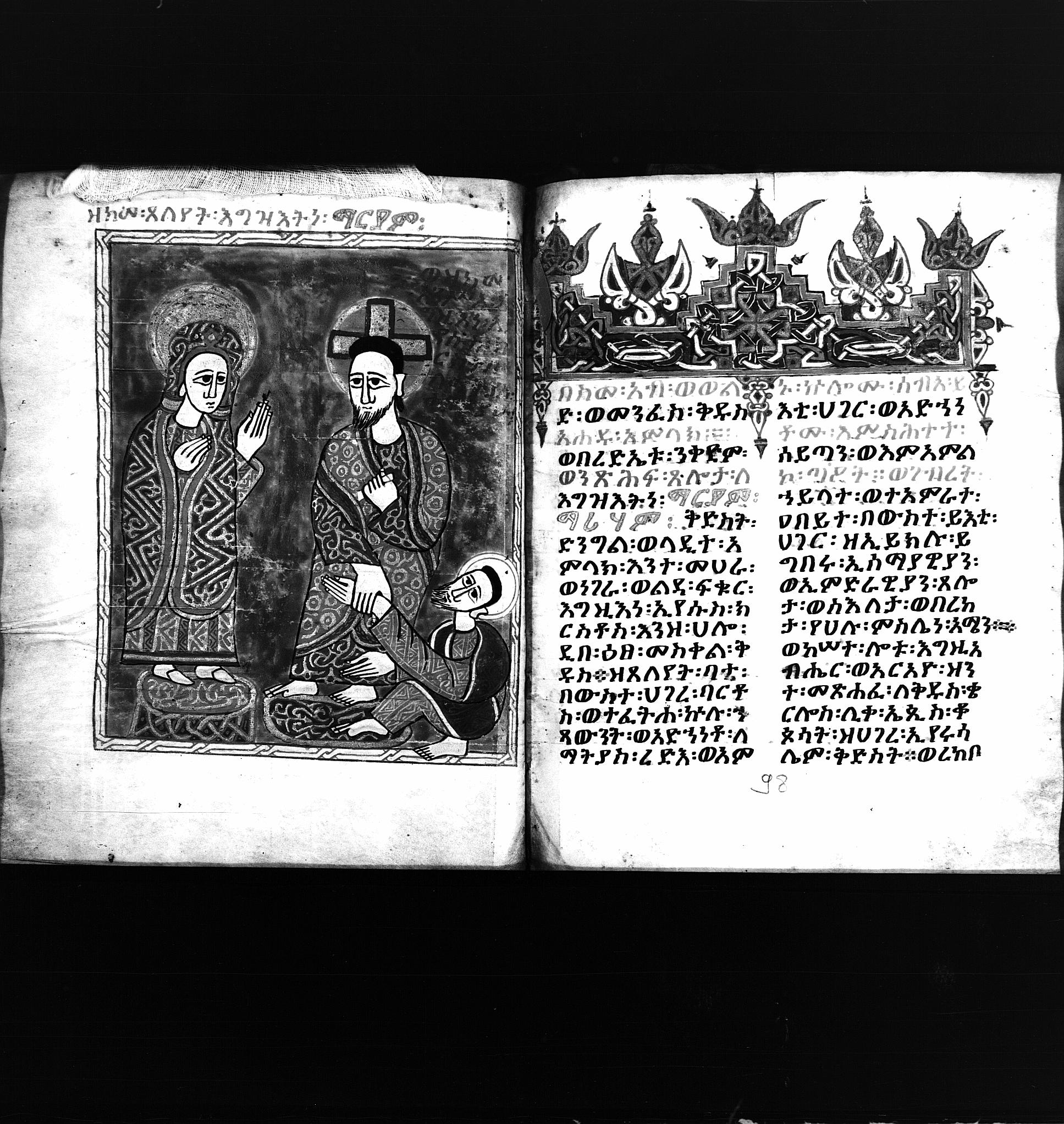
1996
Receives additional National Endowment for the Humanities funding for the monumental task of cataloging thousands of Ethiopian manuscripts. Today, HMML holds the largest digitized collection of Ethiopian manuscript materials in the world, especially in the Ethiopian Manuscript Microfilm Library (EMML) collection, largely cataloged by Dr. Getatchew Haile. At left, a microfilmed image of the famed Miracles of Mary manuscript (EMML 9002).
2000s
Digital replaces microfilm. HMML heads to the Middle East.
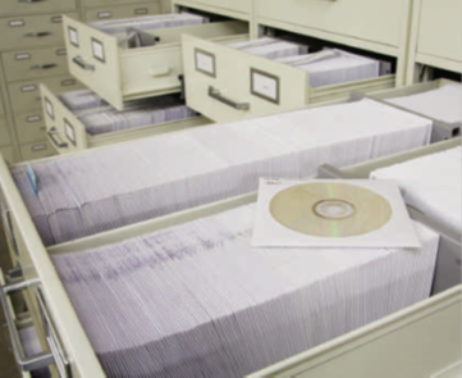
2000
Amasses more than 90,000 reels of microfilm in the HMML vault by the end of the 20th century. The next decade sees HMML move from microfilm to CDs to hard drive image storage. After accumulating more than 8,500 discs, HMML switches to hard disk drives with backups to archival tape and secondary hard drives.
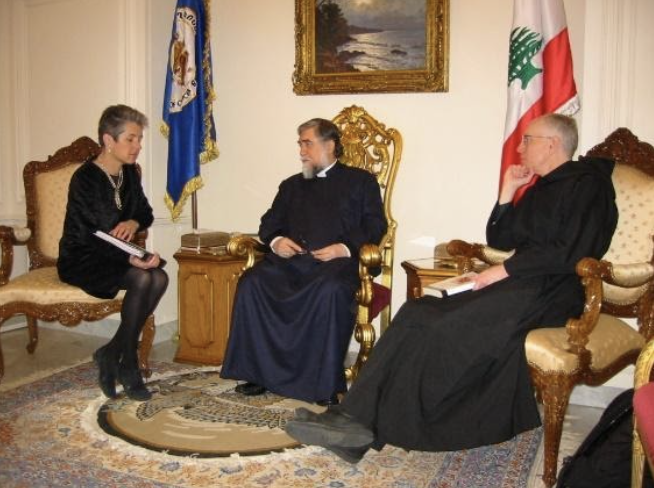
2002
Names scholar and historian Katherine Gill as HMML’s fifth executive director, succeeding Father Eric Hollas, OSB, who retires. She serves in that position until 2003. From left, Katherine Gill, His Holiness Aram I, Catholicos of the Great House of Cilicia (Armenian Apostolic Church), and Father Columba Stewart, OSB, in Antelias, Lebanon (2003).
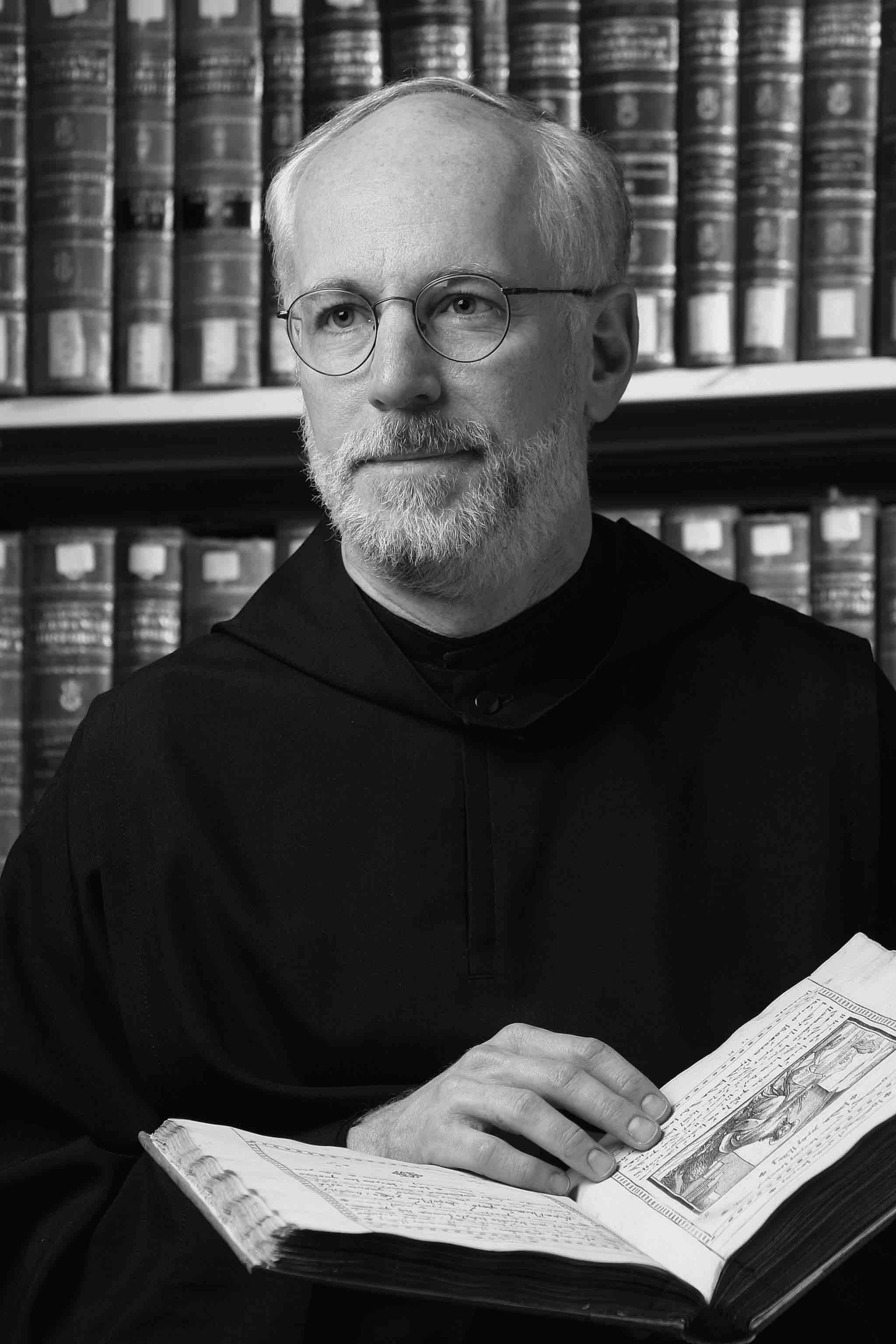
2003
Names professor, scholar, and monastic Father Columba Stewart, OSB (at left) as the sixth executive director of HMML since its founding. Fr. Columba had been a Senior Research Fellow in Eastern Christianity and Director, Eastern Mediterranean Manuscript Initiative at HMML from 2002–2003. Under his leadership, HMML’s focus shifts from Western Europe to the near and Middle East, where traditions going back to the beginning of Christianity are threatened by political instability, radical fundamentalism, and an exodus of community members to the West. And, the technology shifts, as well. Microfilm serves its purpose admirably, but advancements in digital photography make it possible to capture high-resolution color images of manuscript pages using cost-effective, durable equipment. Moving forward, HMML employs only digital imaging.

2003
Launches first digital preservation project at the monastery of Our Lady of Balamand (at left) in northern Lebanon. The timing is ominous. Days after the first digital studio is installed, the United States and its allies invade Saddam Hussein’s Iraq. The region experiences continued unrest, sectarian violence, and civil war.
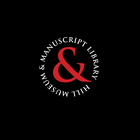
2005
Celebrates its 40th anniversary and a name change to the Hill Museum & Manuscript Library. The emblem version of the organization’s logo (at left), which emphasized an ampersand (&) was commissioned to demonstrate the dual museum and library components of HMML’s work.
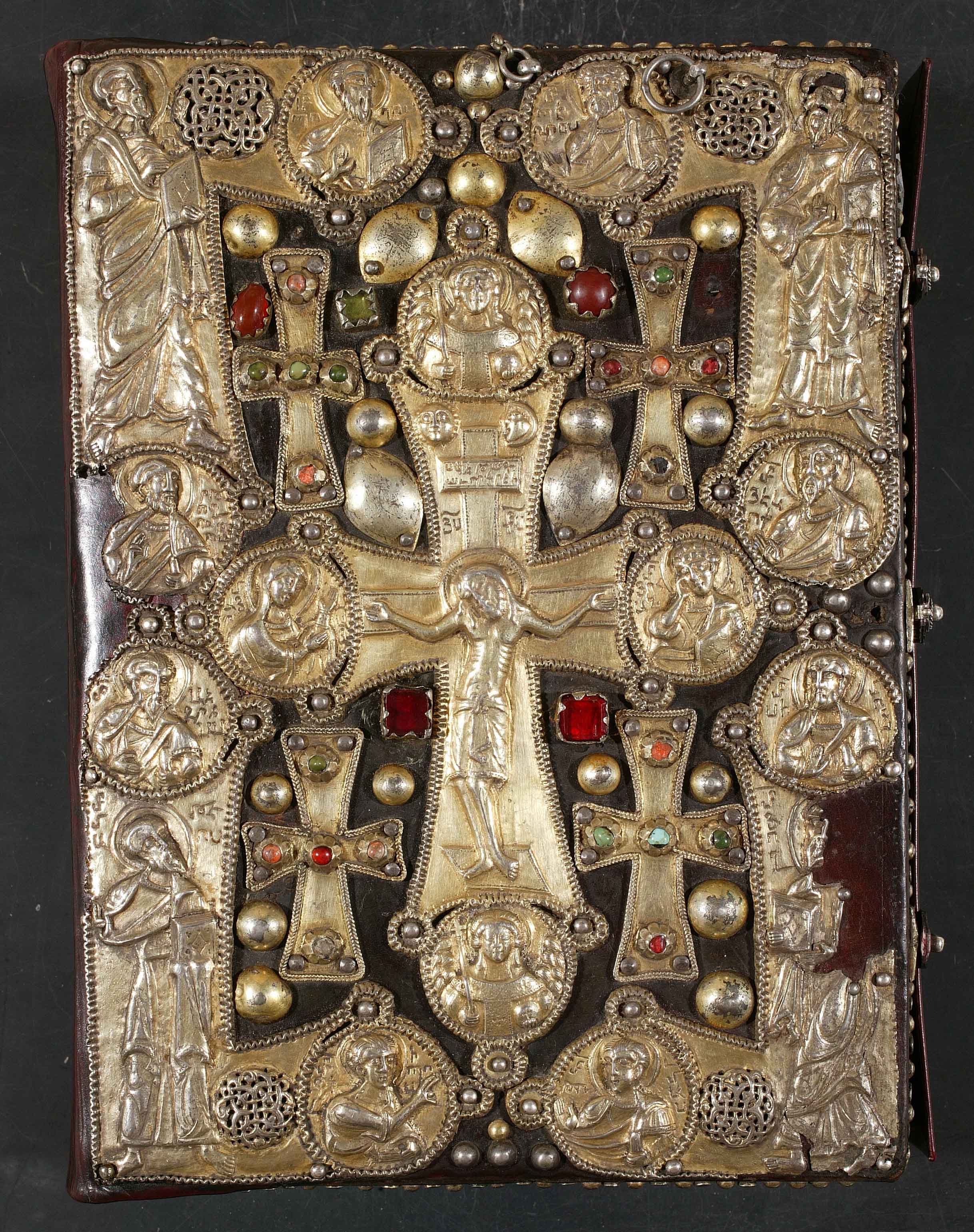
2005
Begins quiet, but extensive projects to digitize the manuscripts belonging to remnants of the Armenian and Syriac Christian communities that survived the 1915–1922 massacres in Turkey.
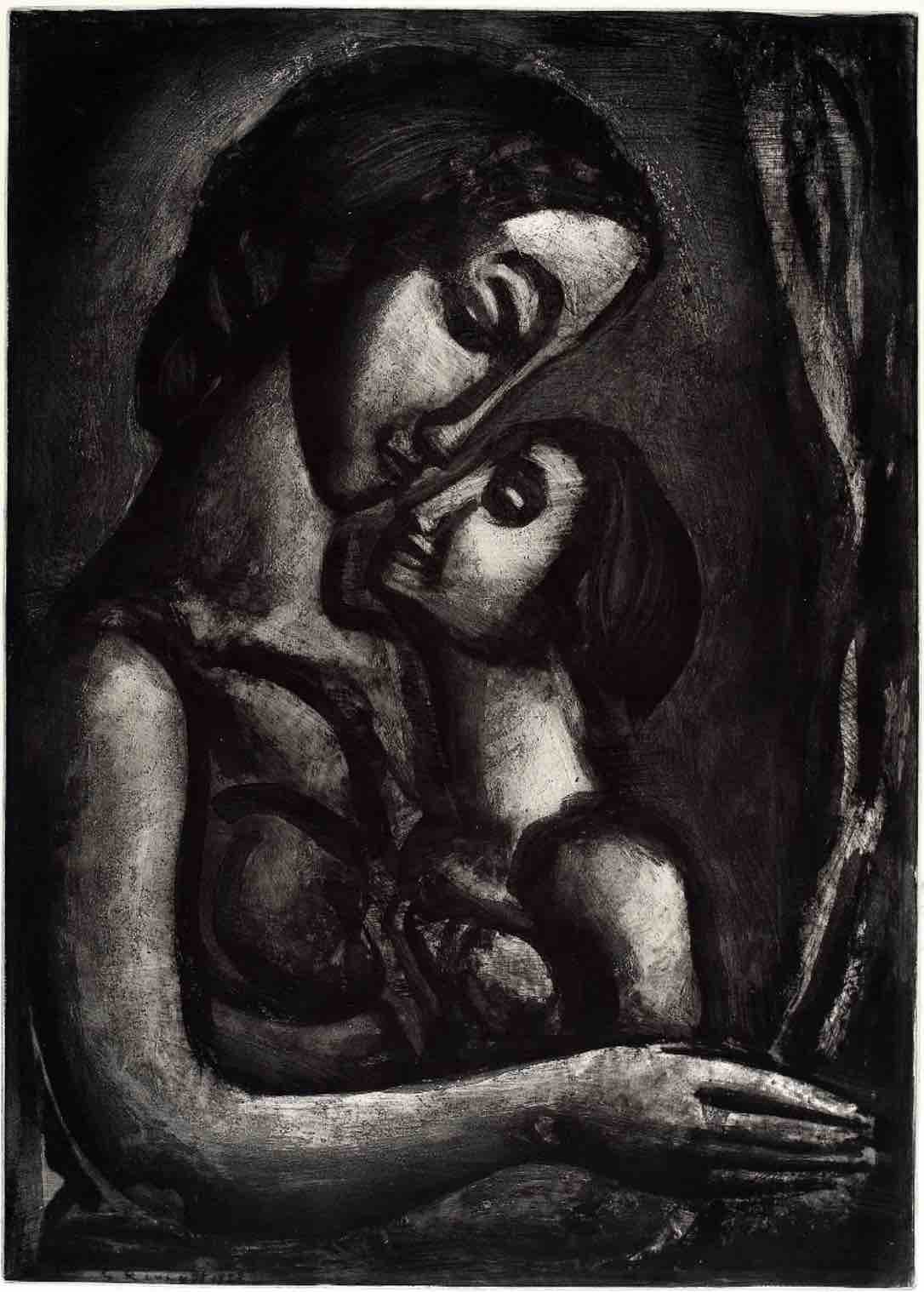
2005
Assumes responsibility for the Saint John's University rare books and for the Arca Artium, the personal collection of Frank Kacmarcik OblSB (1920–2004). For many years a close associate of Saint John’s University as faculty member, consultant, and frequent visitor, Br. Frank became a claustral oblate of Saint John’s Abbey in 1989 and donated his collection to Saint John's University in 1995. Entitled the Arca Artium, “Ark of the Arts”, his collection includes the book arts, graphic art, liturgical art, monasticism, and architecture. The rare book holdings number more than 5,000 and fine art holdings include more than 6,000 original prints. Volumes in the rare book library provide excellent examples of the manuscript tradition, the transition to printing with movable type, and the history of fine printing houses, ancient through contemporary. At left, the collection includes a Georges Rouault, To love would be so sweet! from the Miserere et Guerre series. The series was commissioned in 1916 by Ambroise Vollard and printed in the 1920s. It was published in 1948.
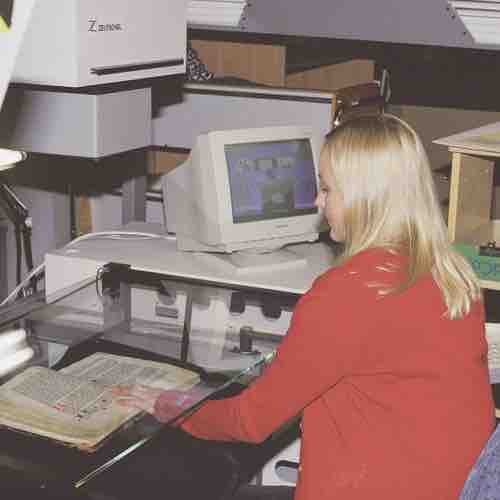
2006
Receives the final microfilms from its last microfilm project, at the National Library (Kungliga Biblioteket) in Stockholm, Sweden, which began in 2000. HMML films more than 600 manuscripts under the guidance of Father Aelred Tegels, OSB, and then Father John Kulas, OSB. At left, a technician microfilming at the National Library.
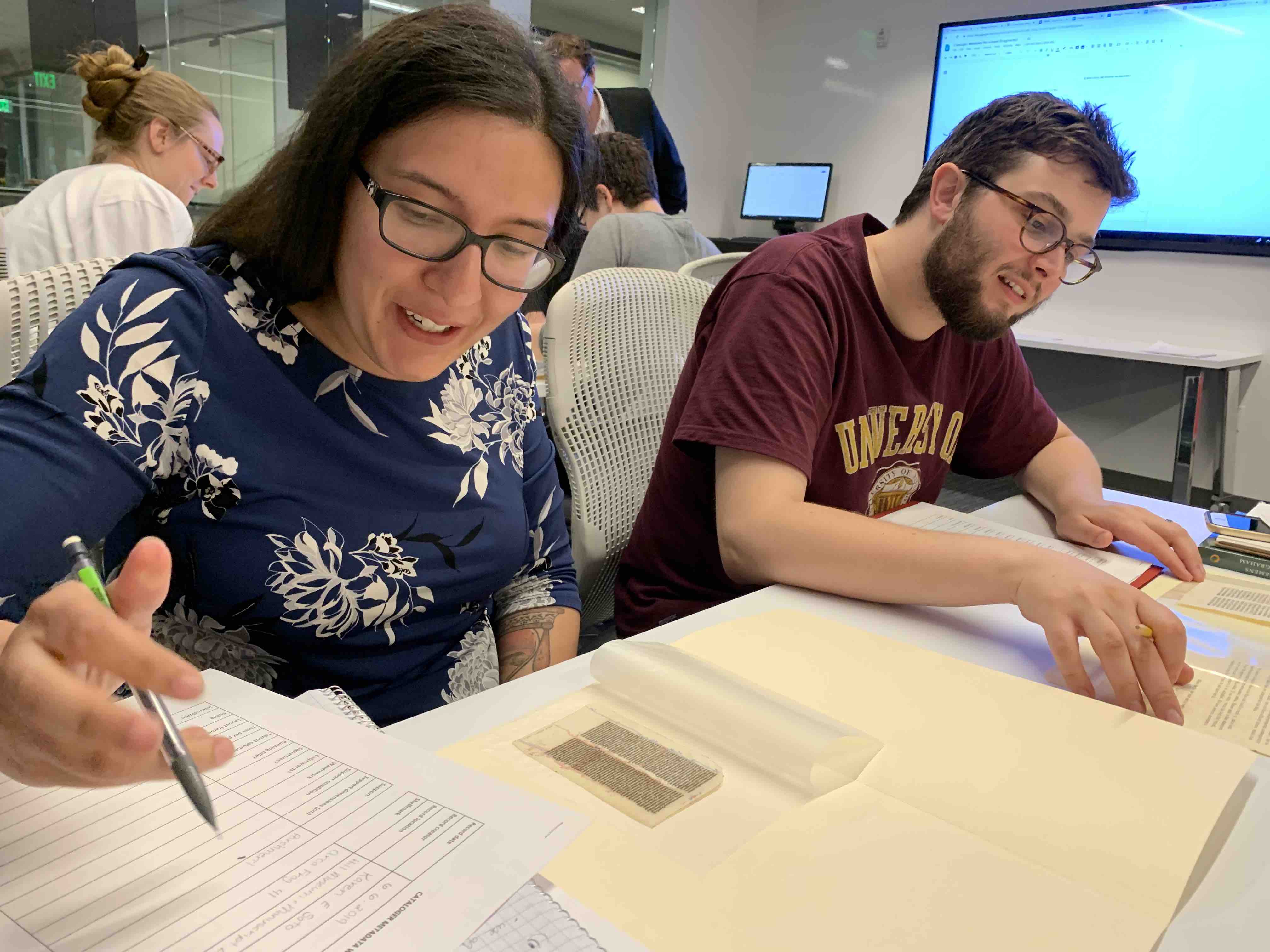
2006
Hosts the first Minnesota Manuscript Research Lab in partnership with the Medieval Study Center at the University of Minnesota, Minneapolis, which is fully subscribed at 10 participants
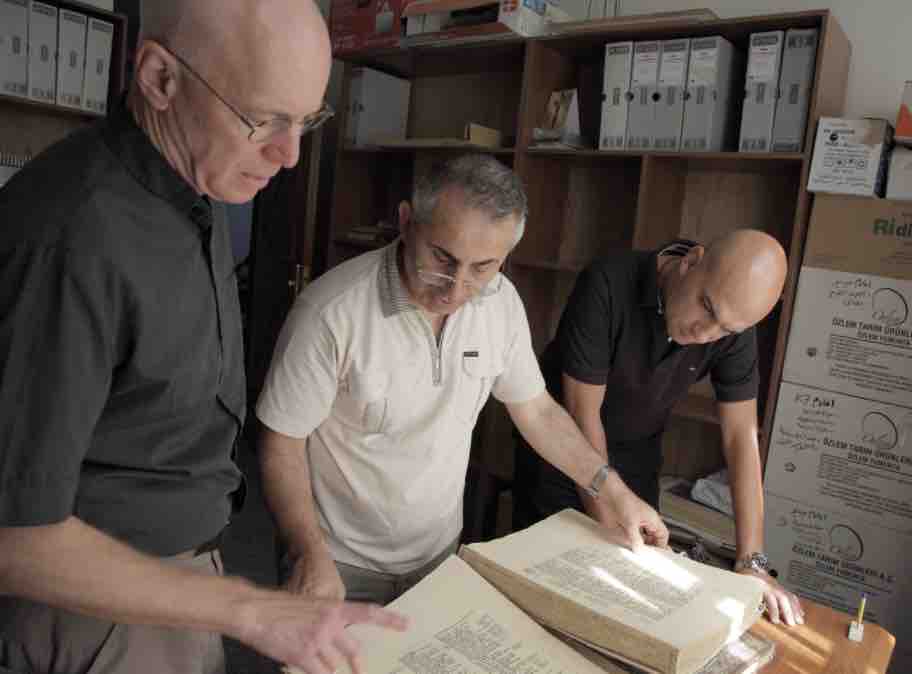
2009
Begins work with Iraqi church leaders to digitize manuscripts displaced by war and its aftermath. Left to right: HMML Executive Director Father Columba Stewart, OSB, with preservation partner Father Najeeb Michaeel, OP, and Walid Mourad, director of HMML field operations for the Middle East and Africa, examine manuscripts for digitization at Centre Numérique des Manuscrits Orientaux (CNMO) in Qarah Qūsh, Iraq. Fr. Najeeb is now the Chaldean Catholic Archbishop of Mosul. Because of continued instability in the region, CNMO and its remaining manuscripts move to Erbil, Iraq, in 2012.
2010s
Digital innovation. HQ renovation. A trip to Timbuktu.

2010
Announces that the Malta Study Center is fully funded as a result of meeting a $450,000 challenge grant from the National Endowment for the Humanities. The Center is the only location outside of Malta where scholars have access to the archives of the Knights of Malta, as well as other major archival treasures of this island nation, all under one roof. The gathering of these materials at HMML makes research even more convenient than research in the various archives in Malta, where much of the material is either unavailable to scholars or available only on a limited basis.
HMML begins digitization of Islamic manuscripts with a project in Hārar, Ethiopia, followed in 2011 by four projects with family libraries in Jerusalem.
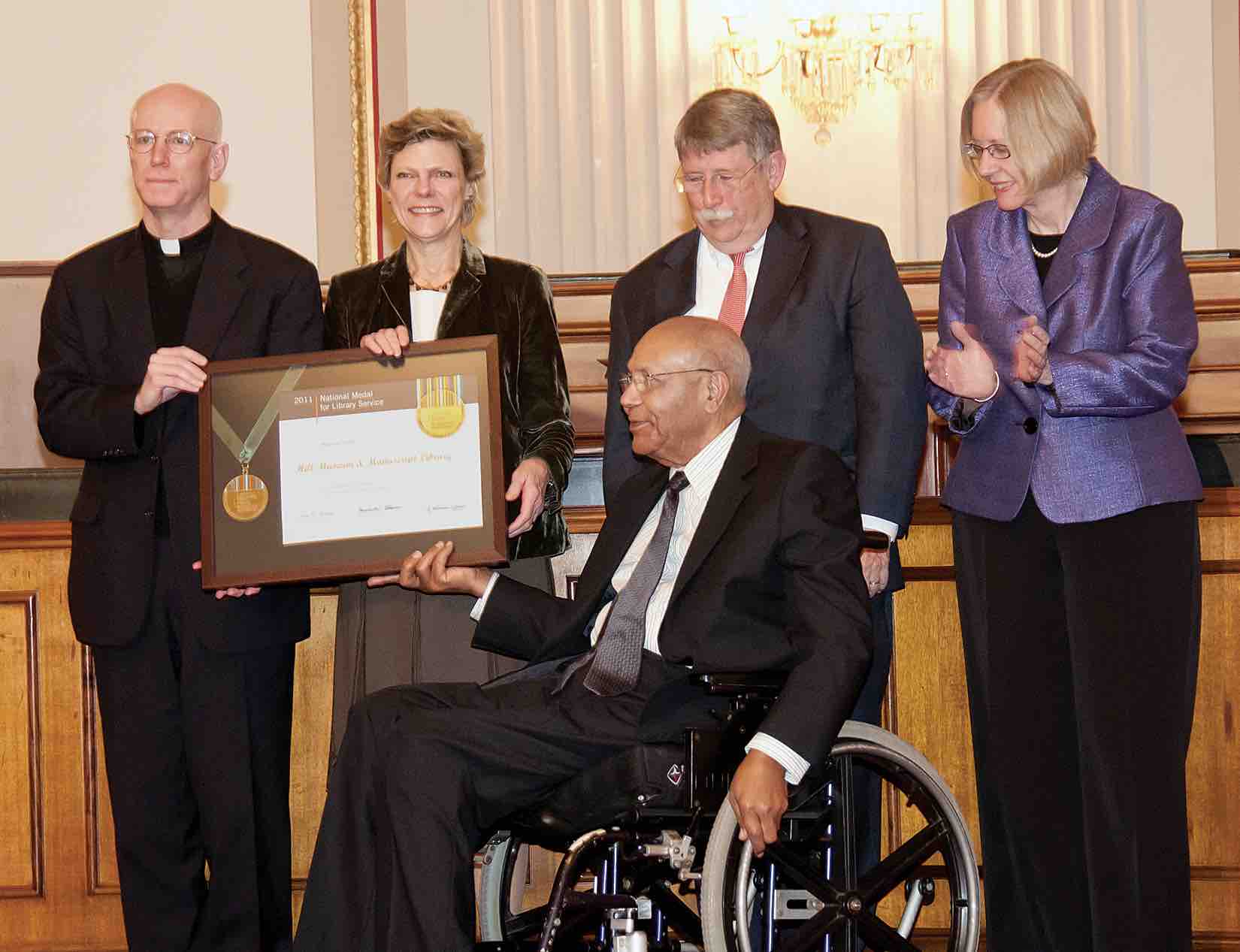
2011
Receives the National Medal of Honor from the Institute of Museum and Library Services. It is the highest award a library can receive in the United States. At the awards ceremony, Cataloger and Director of HMML’s Ethiopian Study Center Dr. Getatchew Haile (seated) accepts the National Medal award on HMML’s behalf. Standing from left to right: HMML Executive Director Father Columba Stewart, OSB, NPR Senior News Analyst Cokie Roberts, HMML Board of Overseers Chair Tom Joyce, and Director of the Institute of Museum and Library Services Susan Hildreth.
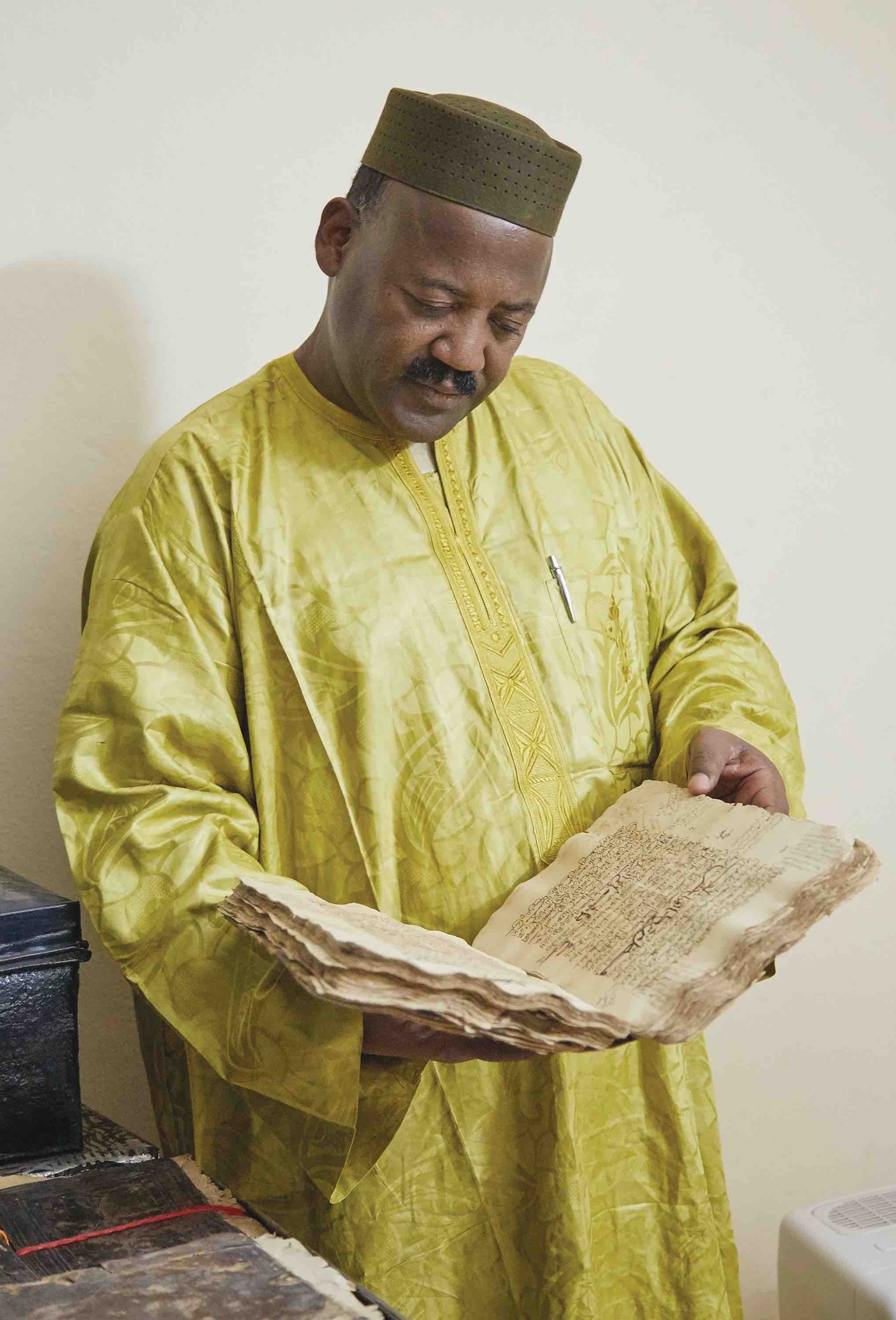
2011
Receives $3 million grant from Arcadia designated for manuscript preservation over a five-year period. The funding is instrumental in supporting digitization of endangered global manuscript heritage, such as the extensive projects in Mali. At left, Dr. Abdel Kader Haidara, the director of SAVAMA-DCI (Sauvegarde et Valorisation des Manuscrits pour la Défense de la Culture Islamique) in the Mali capital of Bamako.
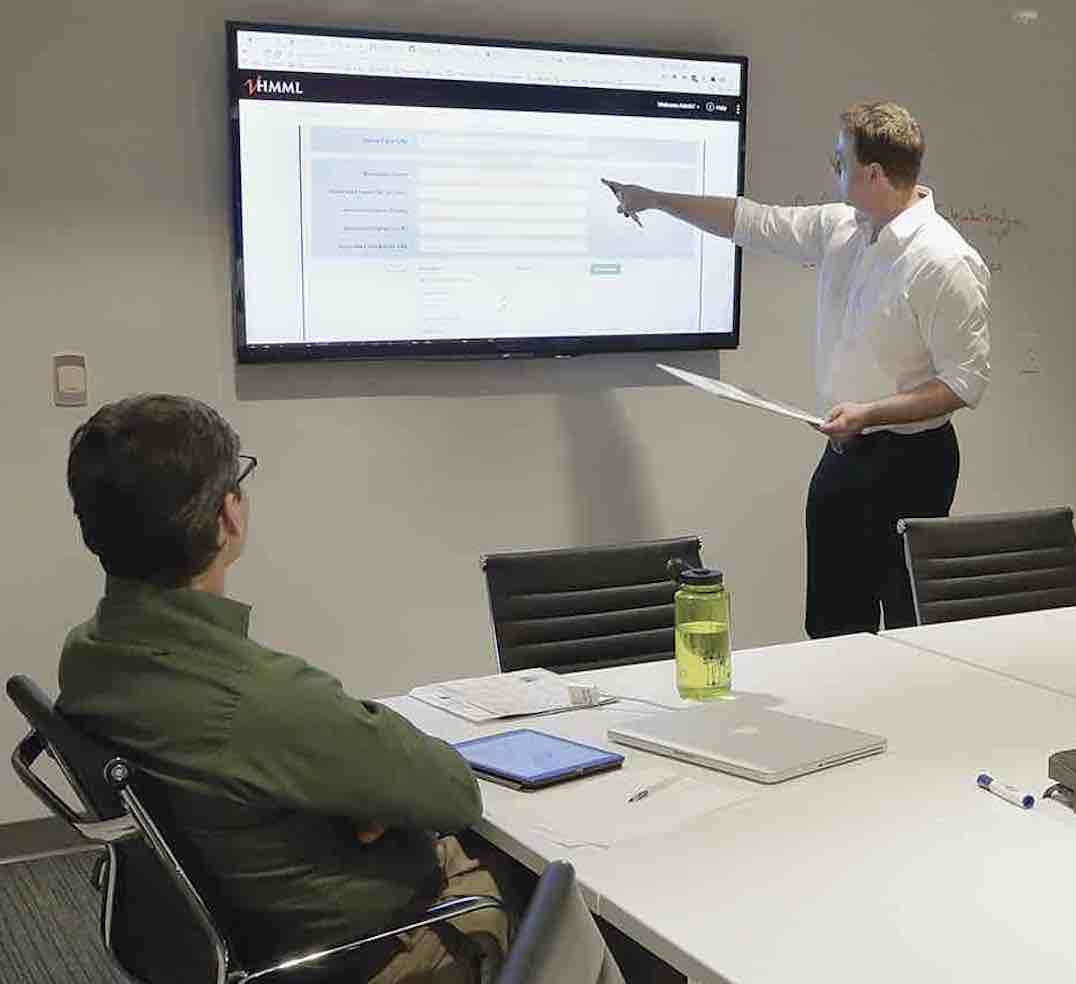
2012
Secures a National Leadership Grant from the Institute of Museum and Library Services to create an online environment for manuscript studies. Additional funders include the Henry Luce Foundation and the Andrew W. Mellon Foundation. It takes three years to fully develop the platform. See 2015 citation below.
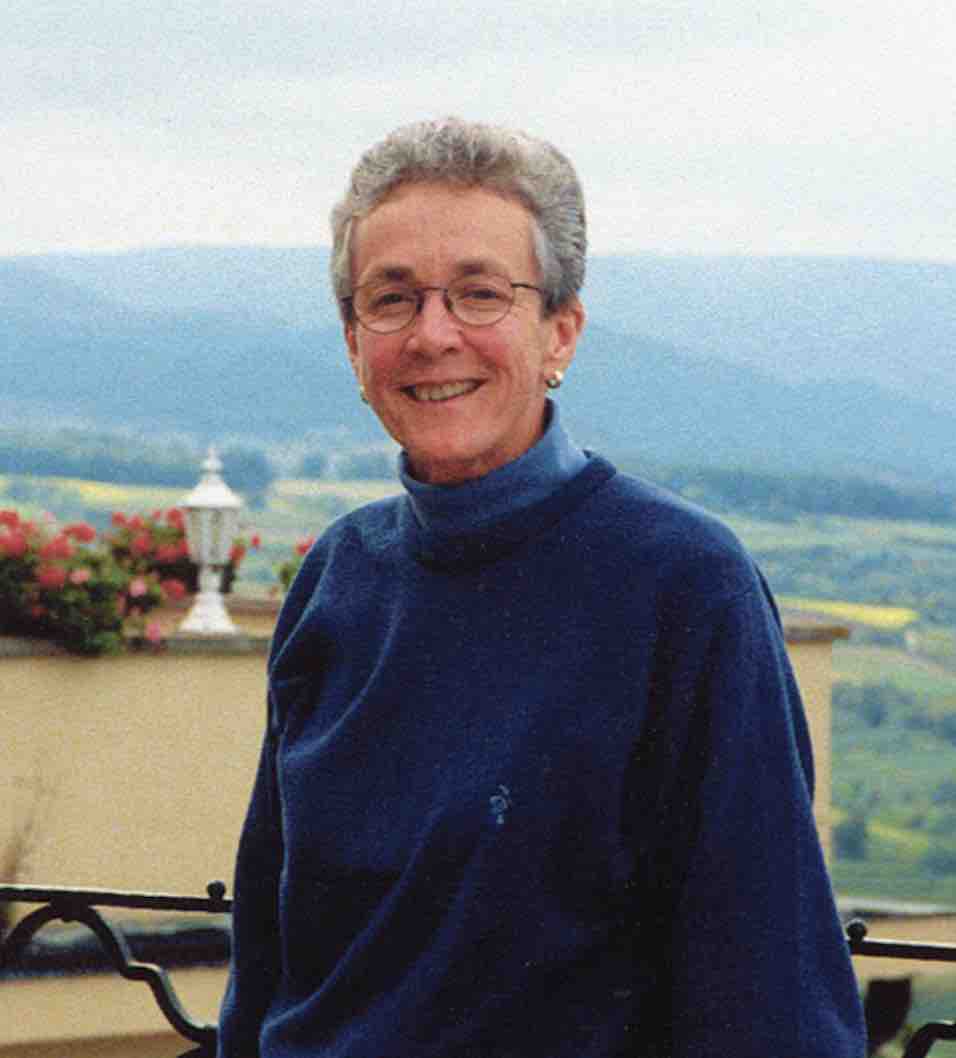
2012
Establishes the Nicky B. Carpenter Fellowship in Manuscript Studies. The Fellowships were endowed by Nicky B. Carpenter, lifetime member and former chair of the HMML Board of Overseers. The Fellowship supports residencies at HMML for research by senior scholars using the digital or microfilm manuscript collections at HMML.

2012
Establishes the Swenson Family Fellowships in Eastern Christian Manuscript Studies for Junior Scholars. The Fellowship was established by Dr. Gregory T. and Jeannette Swenson, with their son and HMML Board member, Nicholas Swenson (at left), to support residencies at HMML for graduate students or postdoctoral scholars with demonstrated expertise in the languages and cultures of Eastern Christianity. Awardees must undertake research on some aspect of Eastern Christian studies requiring use of the digital or microfilm manuscript collections at HMML.
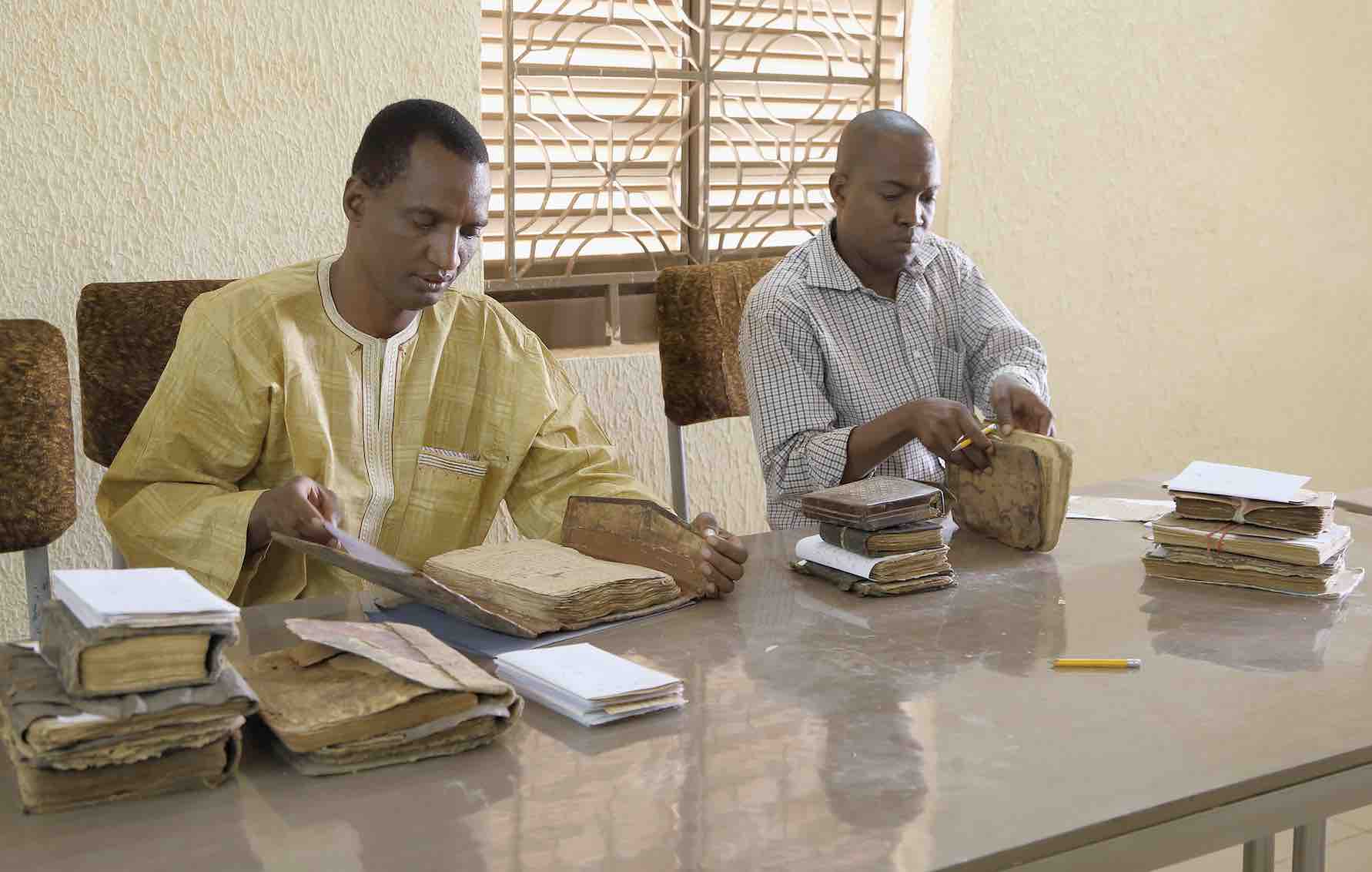
2013
Forges a partnership agreement with non-government agency SAVAMA-DCI, (Sauvegarde et Valorisation des Manuscrits pour la Défense de la Culture Islamique), to digitize manuscripts rescued from Timbuktu, Mali, which becomes the single largest project, potentially exceeding 250,000 manuscripts. At left, digitization work is done by young Malians, many of whom relocated from Timbuktu to Bamako like the manuscripts they are preserving. HMML provides the equipment, training, and ongoing support for the project.
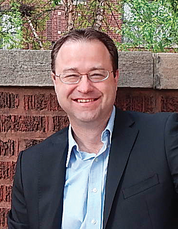
2014
Names Dr. Daniel K. Gullo as the curator of the Malta Study Center. He succeeds founding curator Dr. Theresa Vann. Gullo received his MA from Saint John’s University before doctoral studies at the University of Chicago. Prior to joining HMML, he had been on the faculty of Columbus State University, Columbus, GA.
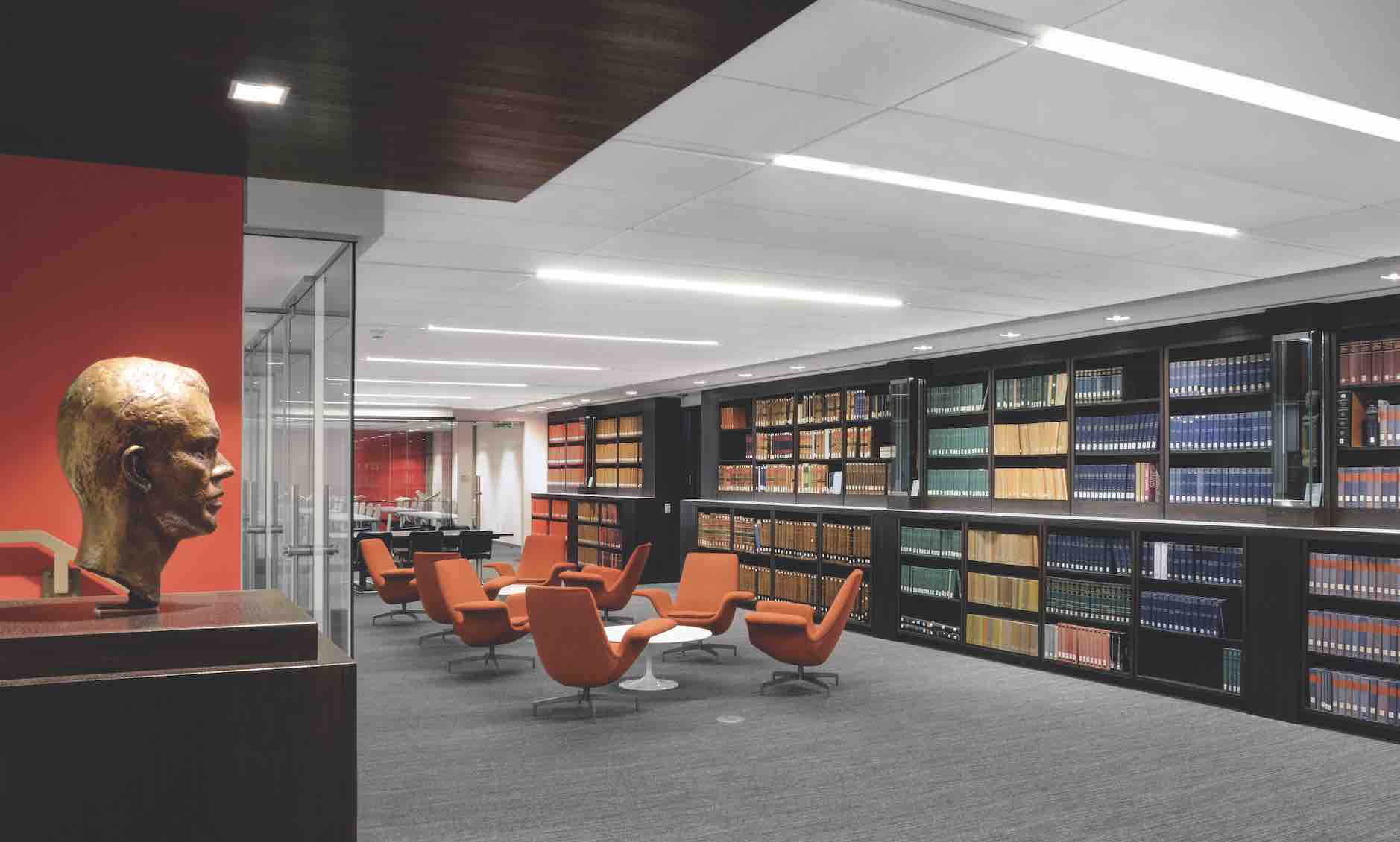
2014
Completes a major renovation addressing the changing technological and scholarly needs of its diverse community of users. The remodel includes a reading room (at left), classroom, conference room, six private studies for visiting scholars, and staff offices. New exhibition cases allow students and visiting scholars to conduct their research in an environment shaped by HMML’s rich collections of rare books and art. Staff offices and workspaces are redesigned to support digital library services, as well as traditional curatorial activities. The remodel maintains the unique style of architect Marcel Breuer, the original designer of the Saint John’s University Alcuin Library.
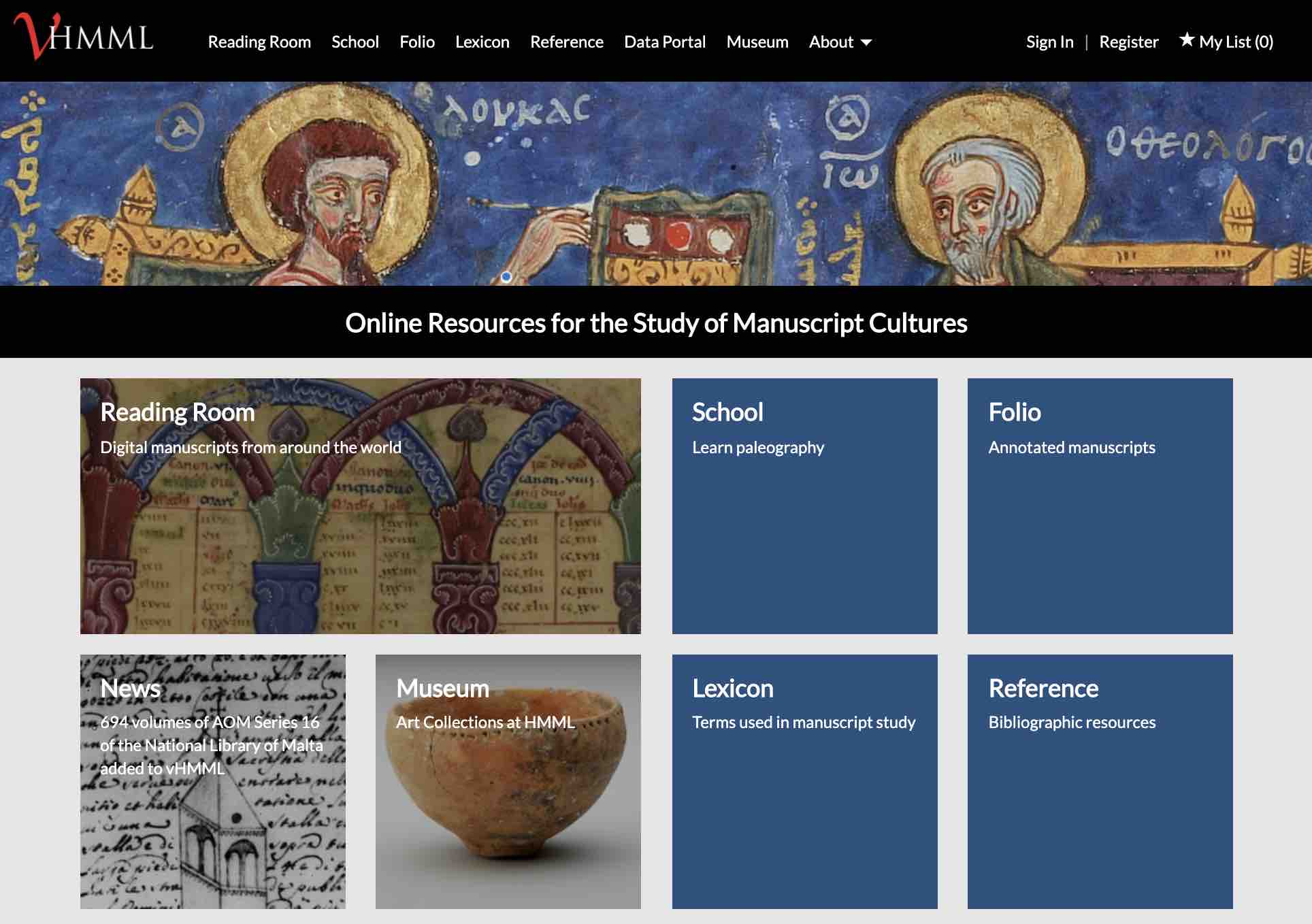
2015
Reaches 50th anniversary having preserved digital copies of more than 50,000 manuscripts and announcing the single largest gift in HMML’s history, a $4 million grant from Arcadia. The Arcadia gift supports digitization, archiving, and cataloging of endangered manuscript collections through 2021 and makes digitized materials freely available online through the creation of the vHMML platform. In the 2015 launch, vHMML hosts the research tools School, Folio, Lexicon, and Reference. In August of 2016, the vHMML platform expands to include HMML Reading Room—providing worldwide access to all digitized and cataloged manuscripts in HMML’s collections—followed by Museum and Data Portal in 2018. The initial collections made available in Reading Room include representative samples of diverse microfilm and digital resources, including images from Europe, Africa, the Middle East, and India.
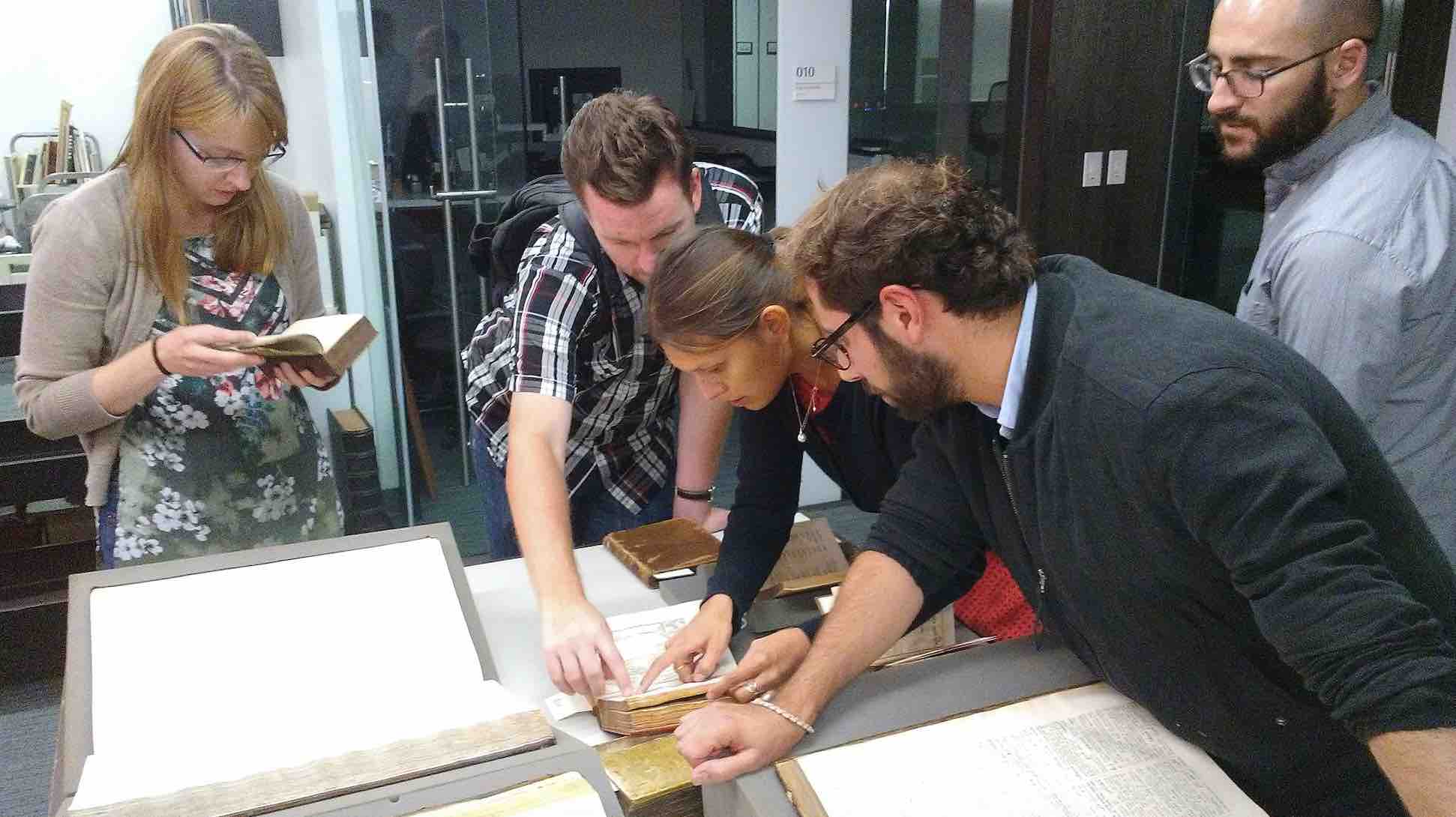
2016
Launches Dumbarton Oaks/HMML Summer Language School. The first offering focuses on Syriac and includes a maximum class of 10 participants and two instructors. The program is sponsored and funded by Dumbarton Oaks and hosted by HMML on the campus of Saint John’s University, Collegeville.
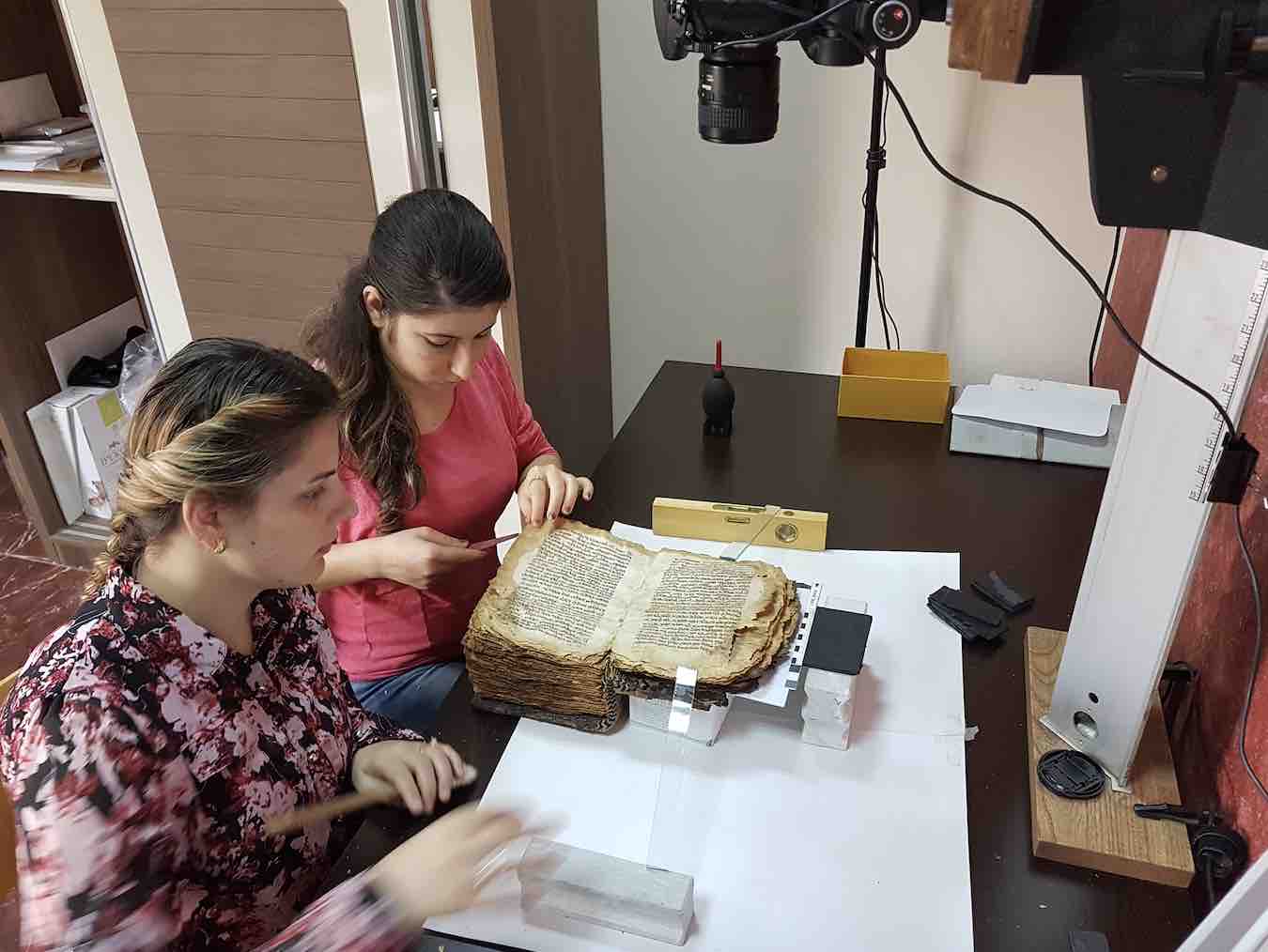
2017
Completes multi-year capital campaign raising more than $20 million to support digitizing manuscripts in threatened regions, increase data archiving and cataloging, create new online research tools, increase scholarship, and renovate physical spaces to improve teaching, learning, research, and public programming. The campaign is the largest in HMML’s history and supports many digitization projects, including the collection of the Chaldean Catholic Patriarchate of Babylon from Baghdad, Iraq. At left, technicians digitize the manuscripts, many of which had been kept in poor storage conditions for hundreds of years. In need of cleaning, they are carefully digitized as they are, bearing the traces left by their many readers and the marks of their several relocations.
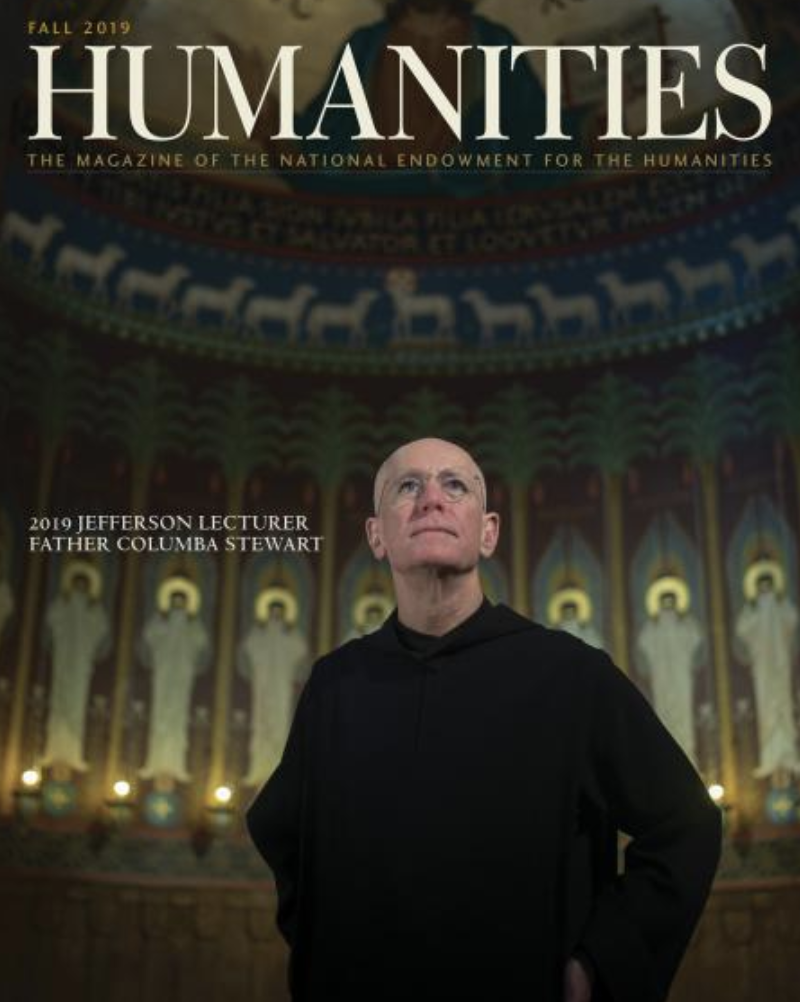
2019
Receives national recognition for lifetime contribution to the humanities. The National Endowment for the Humanities (NEH) names HMML Executive Director Father Columba Stewart, OSB, the 2019 Jefferson Lecturer in the Humanities. He presents his lecture entitled Cultural Heritage Present and Future: A Benedictine Monk’s Long View to a record audience on October 7 at the Warner Theatre in Washington, D.C. Fr. Columba’s career achievements and contributions to the preservation of the humanities is the cover story of the NEH’s Humanities magazine (Fall 2019).
2020s
Milestones in manuscripts digitized. Cataloging focus. HMML Authority File.
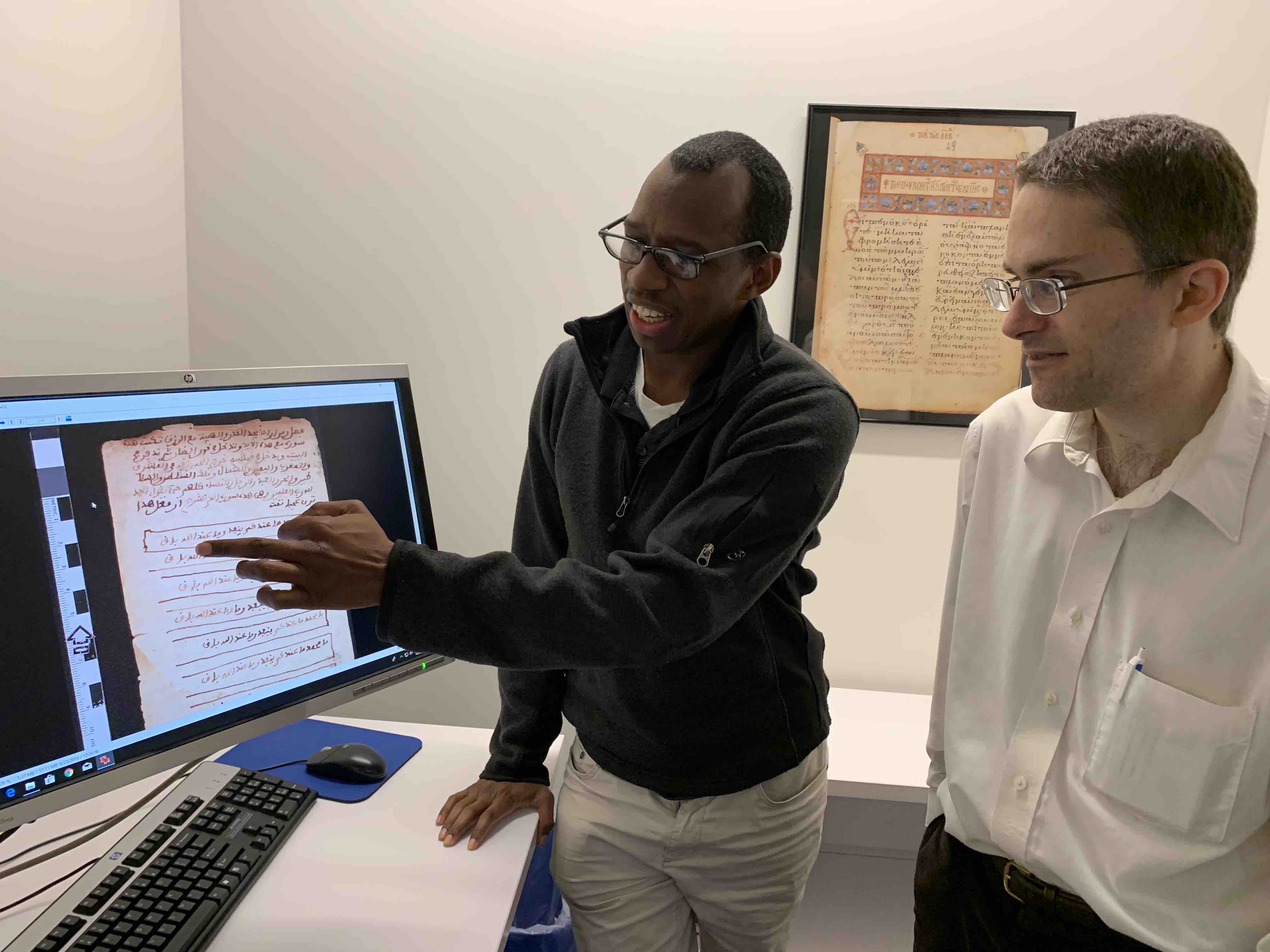
2020
Receives $1.4 million grant from National Endowment for the Humanities to fund a three-year project to catalog 53,000 digitized manuscripts and create an online database of authors and titles originating from under-represented or little-known literary traditions. The database is freely accessible online for use by other libraries and projects.
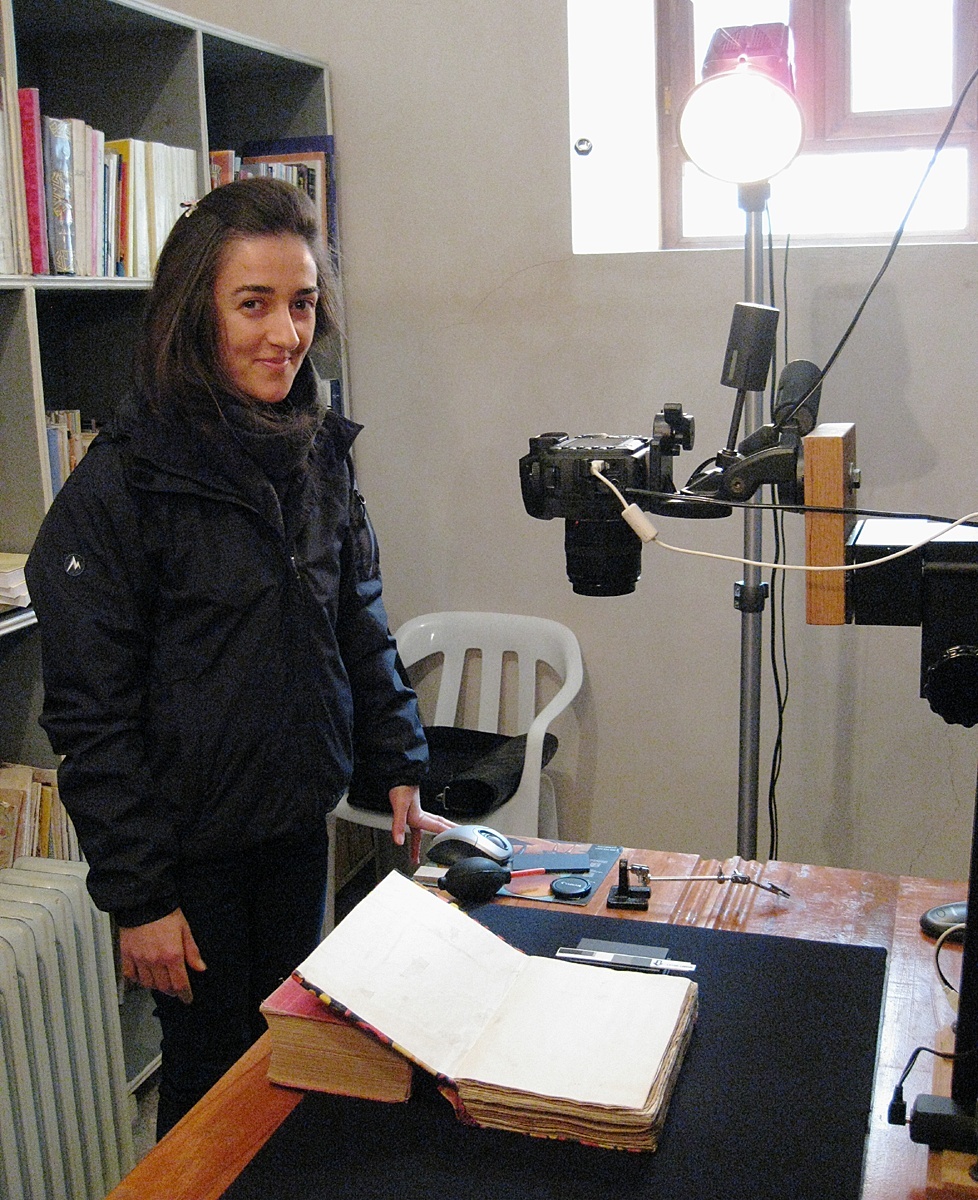
2021
Receives $5 million grant from Arcadia, a charitable fund of Lisbet Rausing and Peter Baldwin. This is the single largest gift in HMML’s history. The five-year grant focuses on the digitization and cataloging of at-risk manuscripts in collections located outside of Europe. It also supports long-term access to digital images and metadata by establishing a fund for the perpetual archiving of each terabyte of data created through the grant.
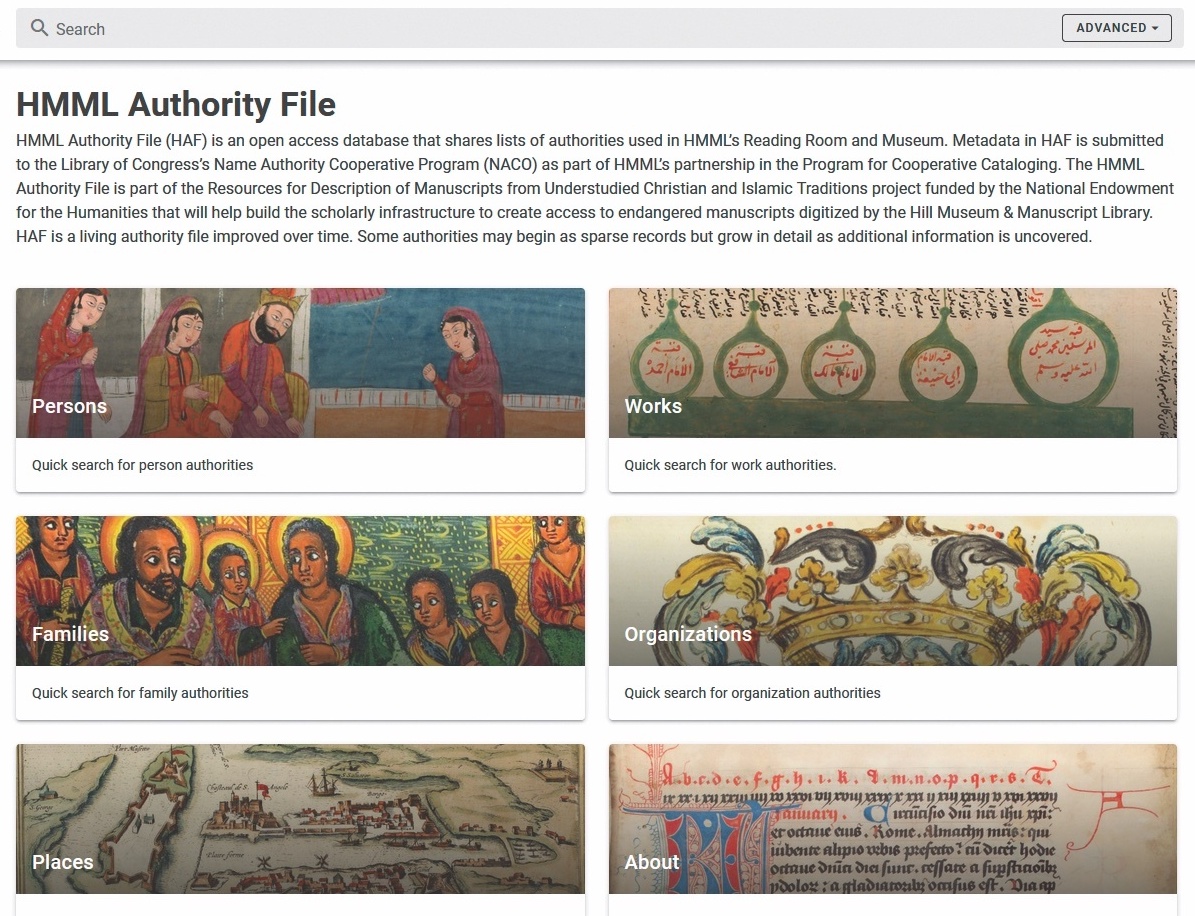
2021
Launches HMML Authority File, an open-access database created as part of a grant from the National Endowment for the Humanities (NEH). Through this new database, HMML creates and shares name authorities—standardized forms of names that uniquely identify people, organizations, families, works, and places associated with the manuscripts and artwork in HMML’s collections. Because HMML preserves collections in traditions that are often underrepresented in Western scholarship and librarianship, HMML Authority File contains a growing body of knowledge that helps bridge linguistic and scholarly divides.
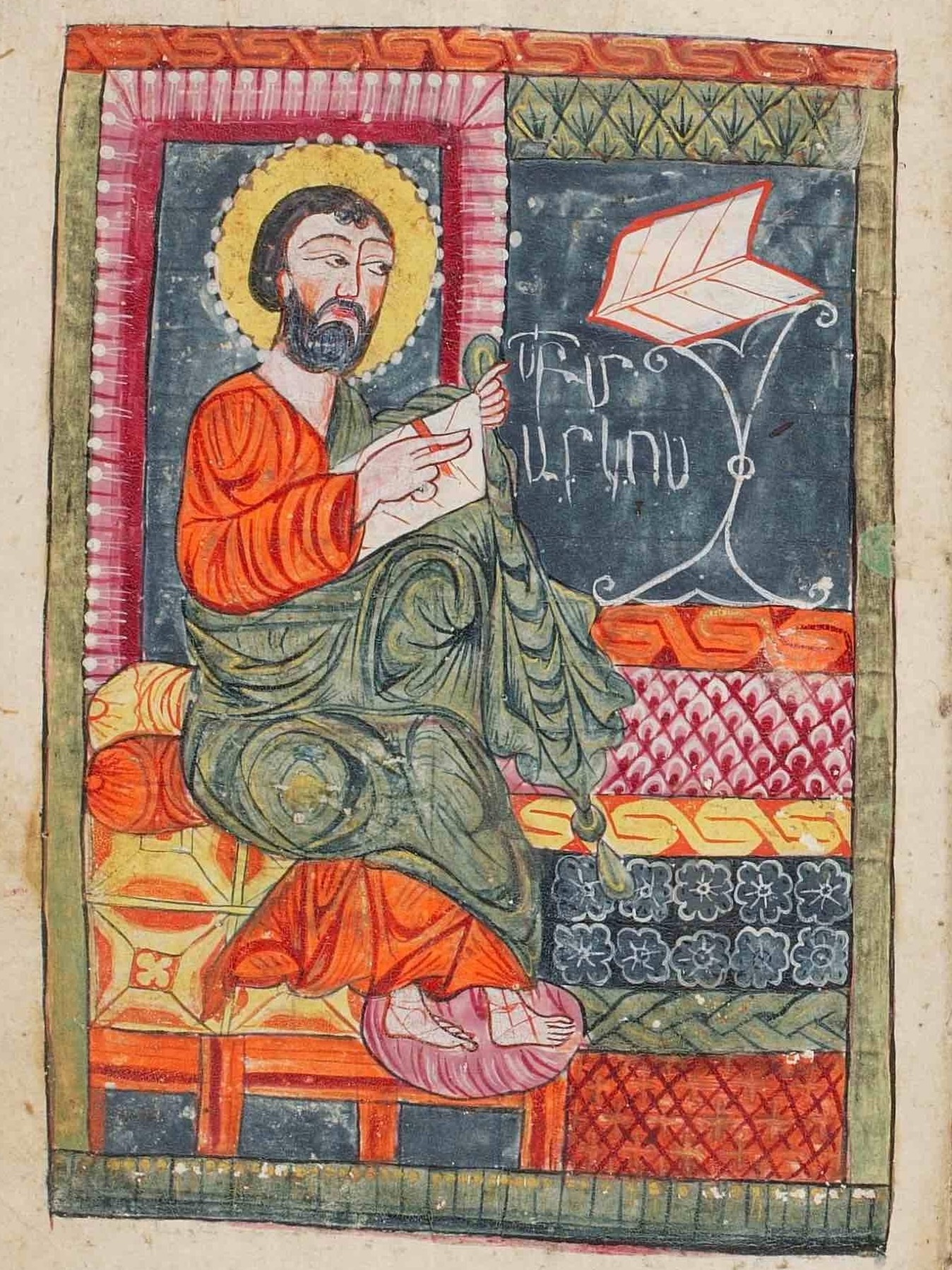
2023
Begins operating, on July 1, 2023, as its own 501(c)(3) nonprofit corporation. HMML started in 1965 as a program of Saint John’s University in partnership with Saint John’s Abbey. The decision to become an independent nonprofit celebrates HMML’s evolution and stability—starting as a safe repository for microfilms of manuscripts held in Benedictine libraries across Europe, to nearly 60 years later when digital preservation activities span 40 global regions, multiple faith traditions, and more than 90 languages.
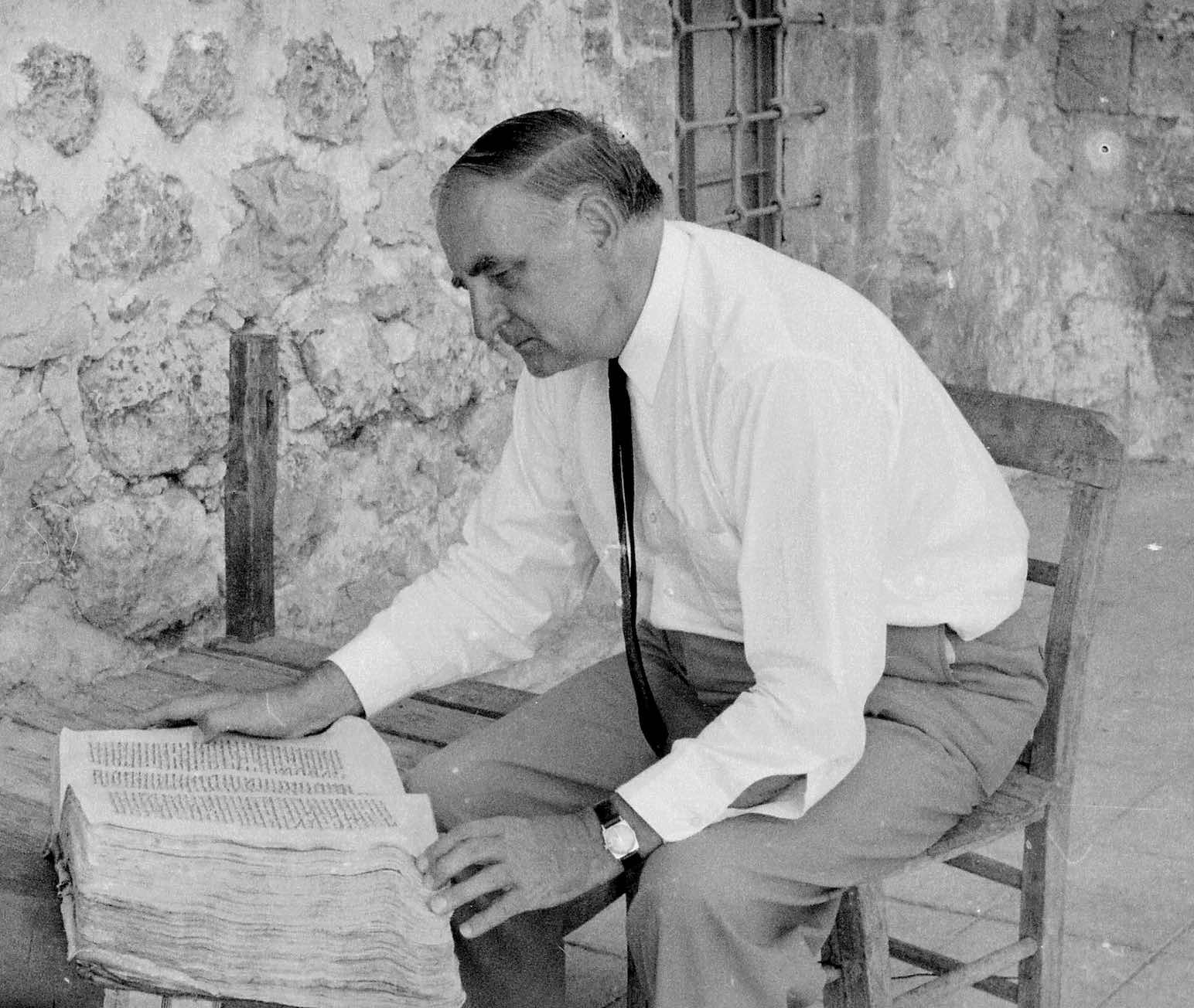
2023
Enables online access to the Vööbus Syriac Manuscript Collection, an archive of more than 60,000 manuscript photos created by Dr. Arthur Vööbus (1909–1988) through dozens of trips to the Middle East—the largest collection of Syriac manuscript images before the advent of digital imaging.
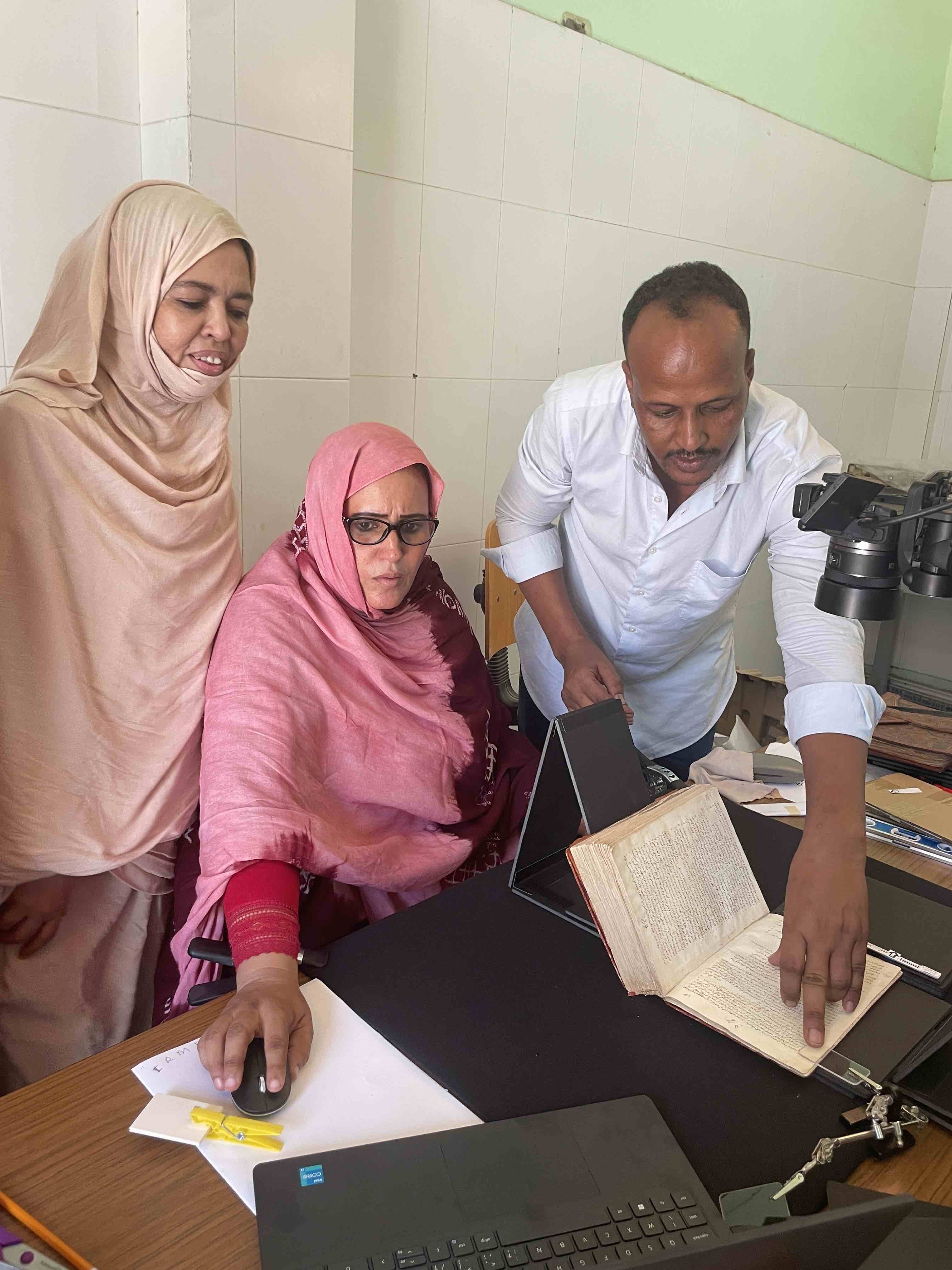
2023
Launches first projects in Bosnia and Herzegovina and in Mauritania. The Mauritania studios are in Nouakchott, the country’s capital, laying the groundwork for a project that will expand into the desert cities of the Saharan regions of eastern Mauritania.
